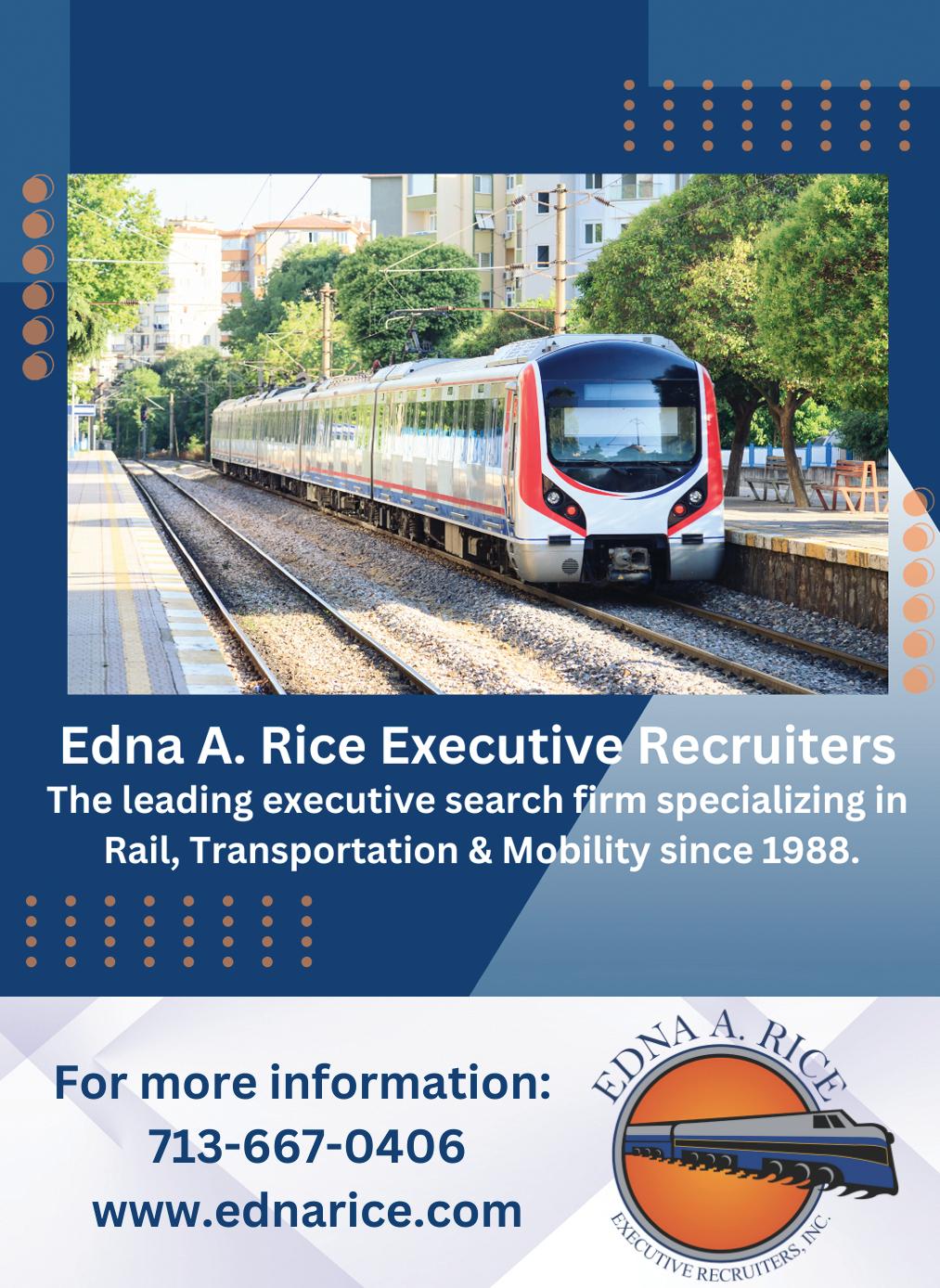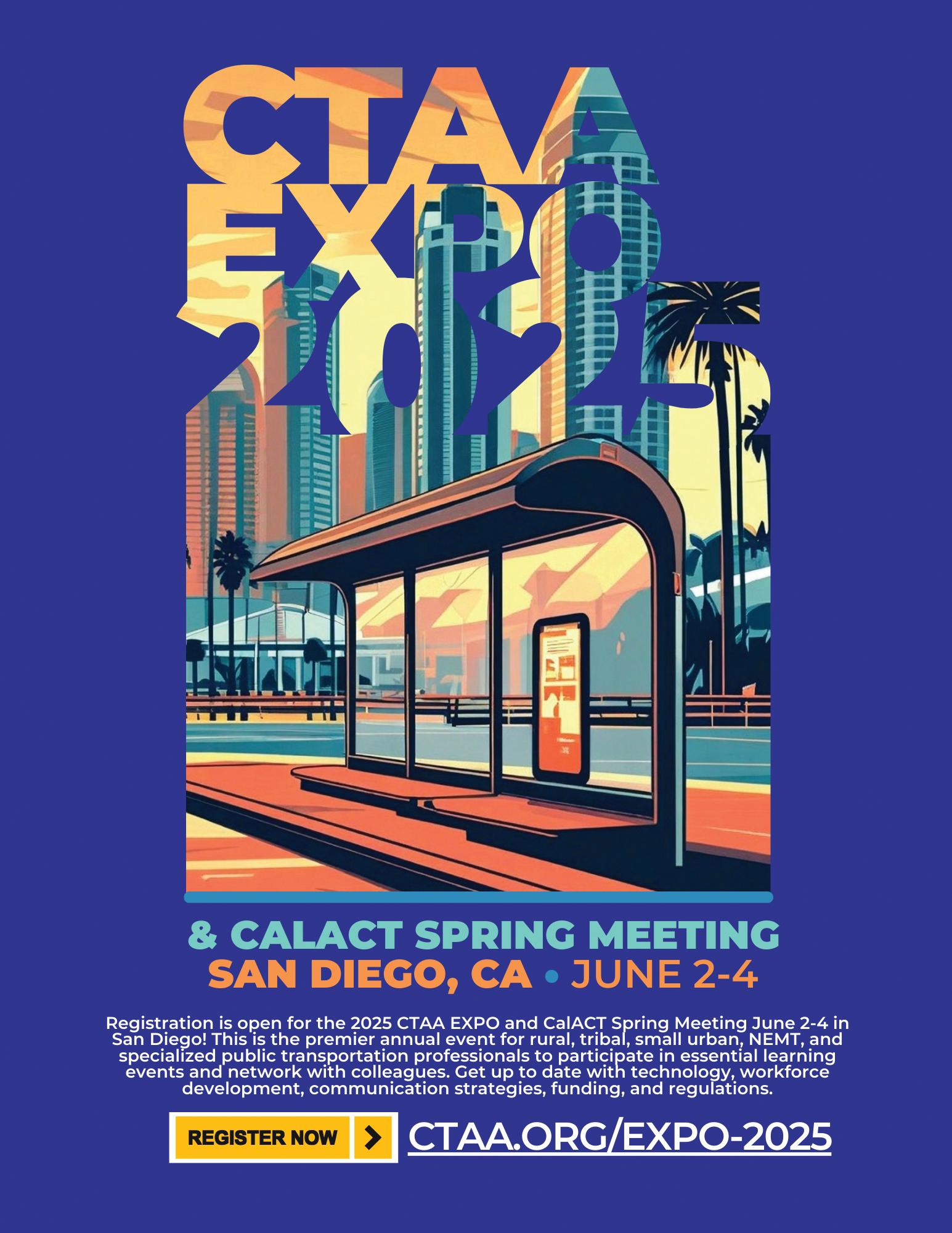




THE RURAL AGENCY is constructing a new maintenance facility, transitioning its fleet to zero emissions and building a new rapid transit line.



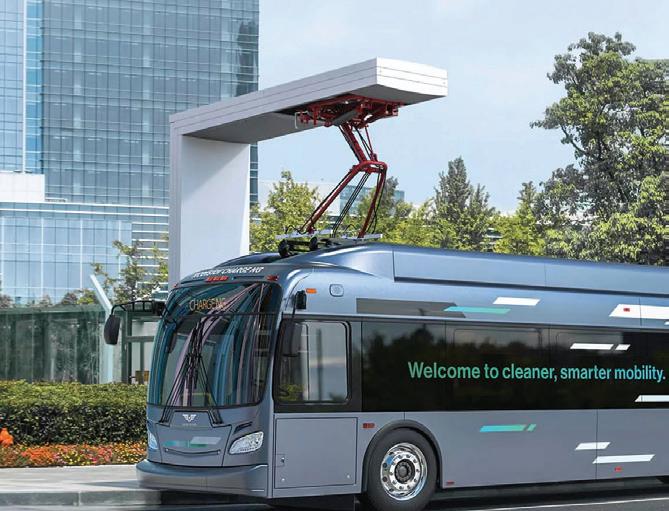

For more information, visit www.MassTransitmag.com/10064883





























































THE RURAL AGENCY is constructing a new maintenance facility, transitioning its fleet to zero emissions and building a new rapid transit line.





For more information, visit www.MassTransitmag.com/10064883























































NEW MEXICO
The agency is building a new maintenance facility, transitioning its fleet to zero emissions and building a new rapid line, so residents can have better transit access in the 10,000 square mile service area.
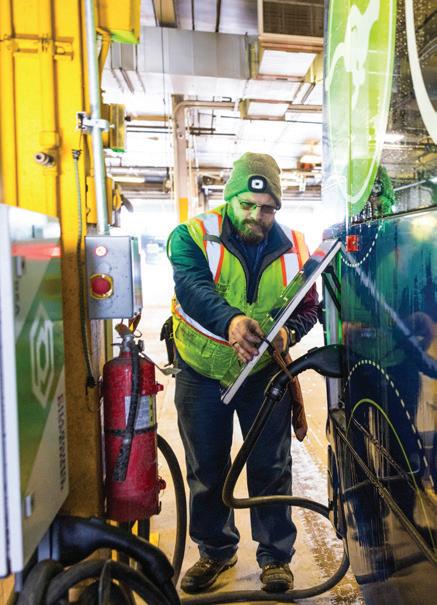
20 Special Report: State of North American Bus Fleets North American bus fleets adapt to increased ridership, supply chain hurdles and a continued shift to zero-emission vehicles.
27
The Trek to a Fully Zero-Emissions Bus Fleet: Mountain Line’s Story Mountain Line puts battery-electric buses to the test, evaluating the technology’s performance in a cold-weather climate.
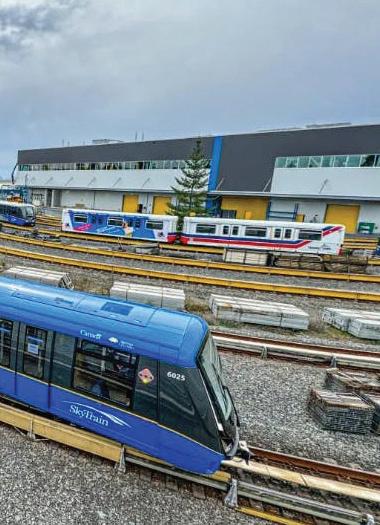
Batteries, hydrogen and the pursuit of zero-emissions transit
▶ What transit agencies should consider when evaluating battery-electric bus and hydrogen fuel cell bus purchases. MassTransitmag.com/55277095
How infrastructure economics tracks growth and development
▶ Infrastructure economics provides analytical tools to measure the efficiency, cost-effectiveness and societal benefits of infrastructure investments. MassTransitmag.com/55277125
Vol. 51, No. 2
VICE PRESIDENT, MARKET LEADERINFRASTRUCTURE & AVIATION GROUP
Brandon Williamson (512) 739-2102 | BWilliamson@MassTransitmag.com
EDITOR IN CHIEF Megan Perrero (603) 891-9454 | MPerrero@MassTransitmag.com
ASSOCIATE EDITOR Brandon Lewis (216) 298-3269 | BLewis@MassTransitmag.com
ASSOCIATE EDITOR Eman Abu-Khaled EAbukhaled@MassTransitmag.com
CONTRIBUTORS Michelle Robertson; Ray Melleady
MULTIMEDIA ACCOUNT MANAGER Kristy Dziukala (815) 353-9493 | Kristy@MassTransitmag.com
INSIDE SALES REPRESENTATIVE Amy Stauffer (920) 259-4311 | AStauffer@MassTransitmag.com
LIST RENTALS REPRESENTATIVES InfoGroup
MICHAEL COSTANTINO (402) 836-6266 | Michael.Costantino@infogroup.com
KEVIN COLLOPY (402) 836-6265 | Kevin.Collopy@infogroup.com
PRODUCTION MANAGER Rita Fitzgerald
AD SERVICES MANAGER Terry Gann
ART DIRECTOR Erin Brown
AUDIENCE DEVELOPMENT MANAGER Debbie Dumke
DIGITAL AUDIENCE DEVELOPMENT MANAGER Alden Metzger
Telling the Story of Public Transportation Numbers are important, but they don’t paint a holistic picture. Storytelling can fill in the gaps.
A Call for National Investment America consistently undervalues one of its most powerful economic and
FOLLOW US
FACEBOOK facebook.com/MassTransit
TWITTER @MassTransitmag
LINKEDIN linkedin.com/company/11303271
INSTAGRAM instagram.com/masstransitmag_
SUBSCRIBE TO OUR NEWSLETTERS MassTransitmag.com/subscribe
ENDEAVOR BUSINESS MEDIA, LLC
CEO Chris Ferrell
COO Patrick Rains
CRO Paul Andrews
CDO Jacquie Niemiec
CALO Tracy Kane
CMO Amanda Landsaw
EVP TRANSPORTATION Kylie Hirko
SUBSCRIPTION CUSTOMER SERVICE
877-382-9187; 847-559-7598
Circ.MassTransit@Omeda.com PO Box 3257, Northbrook IL 60065-3257
ARTICLE REPRINTS
reprints@endeavorb2b.com
Mass Transit (USPS 017-230), (ISSN 0364-3483 print, ISSN 2150413x online) is published 6 times per year in January/February, March/April, May/June, July/August, September/October, November/ December by Endeavor Business Media, LLC. 201 N Main St 5th Floor, Fort Atkinson, WI 53538 . Periodicals postage paid at Fort Atkinson, WI, and additional mailing offices. POSTMASTER: Send address changes to Mass Transit, PO Box 3257, Northbrook, IL 60065-3257.
SUBSCRIPTIONS: Publisher reserves the right to reject non-qualified subscriptions. Subscription prices: U.S. ($47.50 per year); Canada/ Mexico ($81.25 per year); All other countries ($116.25 per year). All subscriptions payable in U.S. funds. Send subscription inquiries to Mass Transit, PO Box 3257, Northbrook, IL 60065-3257. Customer service can be reached toll-free at 877-382-9187 or at circ.masstransit@ omeda.com for magazine subscription assistance or questions.
Printed in the USA. Copyright 2025 Endeavor Business Media, LLC. All rights reserved. No part of this publication may be reproduced or transmitted in any form or by any means, electronic or mechanical, including photocopies, recordings, or any information storage or retrieval system without permission from the publisher. Endeavor Business Media, LLC does not assume and hereby disclaims any liability to any person or company for any loss or damage caused by errors or omissions in the material herein, regardless of whether such errors result from negligence, accident, or any other cause whatsoever. The views and opinions in the articles herein are not to be taken as official expressions of the publishers, unless so stated. The publishers do not warrant either expressly or by implication, the factual accuracy of the articles herein, nor do they so warrant any views or opinions by the authors of said articles.
Funding addressed deferred maintenance and launch capital projects, but critical work remains.
The American Society of Civil Engineers (ASCE) gave the U.S.’s public transit infrastructure a ‘D’ grade in its 2025 Report Card for America’s Infrastructure—a slight improvement from the previous ‘D-’ rating in the 2021 assessment. While transit tied with stormwater for the lowest-scoring category, transit’s progress reflects the positive impact increased federal funding can have on the industry’s infrastructure.
The Infrastructure Investment and Jobs Act (IIJA) delivered $108 billion to help agencies address deferred maintenance while breaking ground on new capital projects. IIJA funds also played a critical role in helping agencies stay afloat during the COVID-19 pandemic as ridership plummeted throughout the country. However, ASCE flagged that nearly 92 percent of pandemic federal aid had been spent as of December 2024. If there is no new financing for operations, then increased fares, reduced service, deferred maintenance and canceled capital projects may become the new norm.
For instance, while ASCE reported the percentage of revenue vehicles and infrastructure assets in a state of good repair were relatively level—with facilities showing a slight improvement—substantial funding gaps remain to bring all assets into a state of good repair. ASCE calculates the industry will need $20.3 billion annually if it’s to achieve a state of good repair by 2038. When accounting for transit’s total infrastructure needs, the number jumps to $618 billion. While funding delivered through IIJA has made a noticeable difference, gaps remain due to years of deferred maintenance that will require continued investment to ensure transit systems remain safe, reliable and equipped to meet evolving needs. ASCE estimates that between 2024 and 2033, the transit sector will face a $152 billion shortfall. Driving this shortfall are rising costs and increased sustainability and resiliency demands while grappling with limited funding for operational support.
Some of these shortfalls can be addressed through the upcoming surface transportation reauthorization. In addition to ensuring robust and predictable long-term funding is in the next reauthorization, there may also be policy modifications to consider.
For example, one of ASCE’s recommendations to boost transit’s score is to support funding flexibility, so agencies can use funds for operations, maintenance, state of good repair and planning across all asset classes. Other policy modifications have called for using formula-based funding instead of discretionary funding for certain programs, refining the permitting process to speed up capital project delivery, as well as streamlining environmental review processes.
However, without broad advocacy, full funding levels and policy modifications that will help public transit may not happen. It’s imperative that Congress understands not only the necessity but also the benefits of investing in public transit. One of the best ways to accomplish this? The power of storytelling. Numbers are compelling, but as one of our best practices columnists writes, they don’t paint a holistic picture of how an agency contributes to its community. Don’t underestimate how stories can resonate with your stakeholders. Use them to “fill in the gaps” and demonstrate the transformative role transit can play when it receives the investment it deserves.
Don’t underestimate how stories can resonate with your stakeholders. Use them to demonstrate the transformative role transit can play when it receives the investment it deserves.
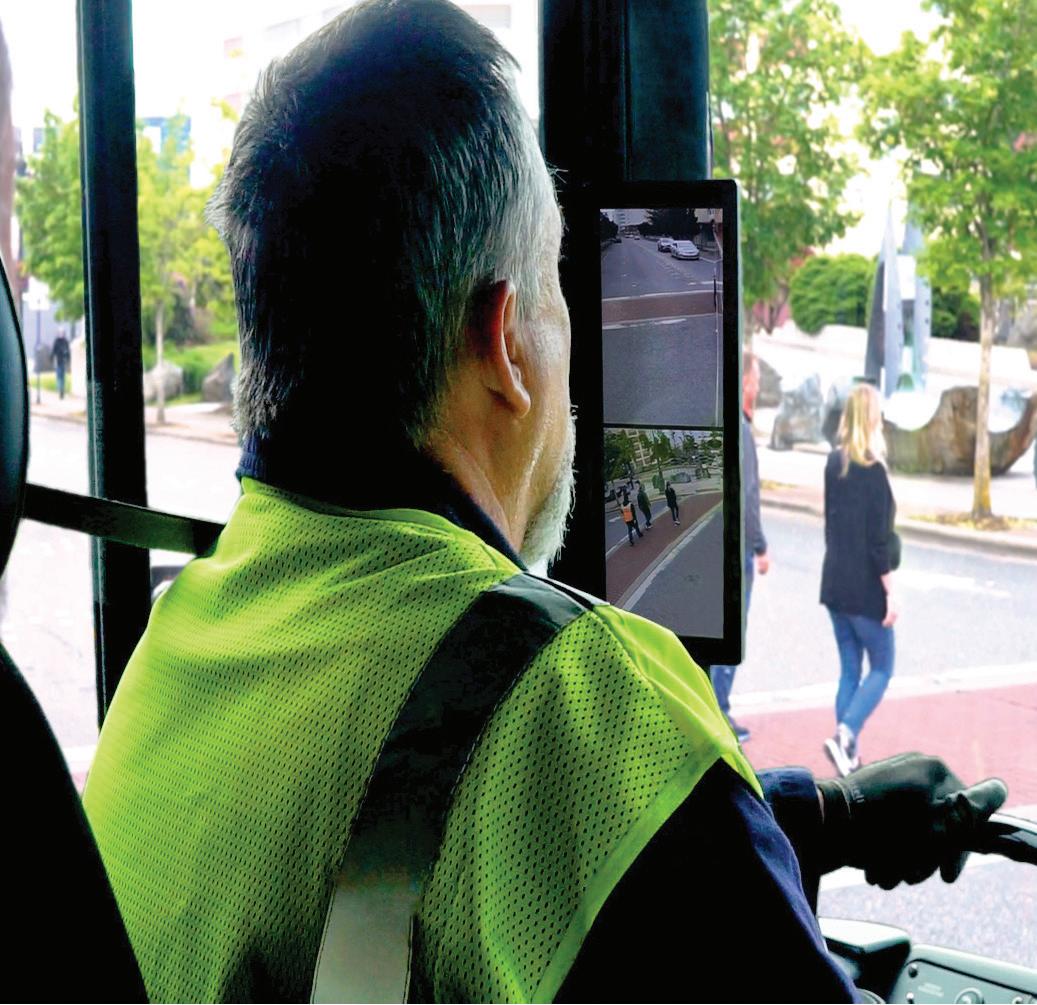
m perrero@ masstransitmag.com
( 603) 891-9454
linkedin.com/in/ m egan-perrero

Megan Perrero, editor in chief

Safe Fleet camera vision technology gives drivers better visibility over traditional mirrors to reduce the chance of costly accidents.
• Safe Fleet ThruView Assist™ integration for A/B Pillar blind spot reduction
• Clear, customizable views day or night
• Enhance visibility in all weather conditions
• Future-proofed: FMCSA Exempt & Standard Compliant
• Connect to onboard recorder for scene recording and incident insight


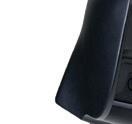
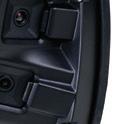

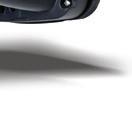

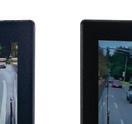
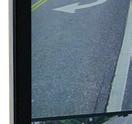
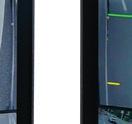
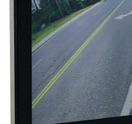
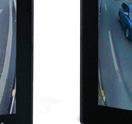
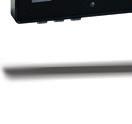

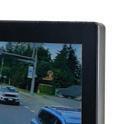
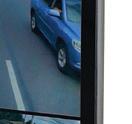
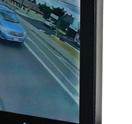
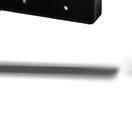



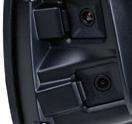

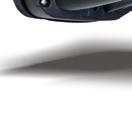

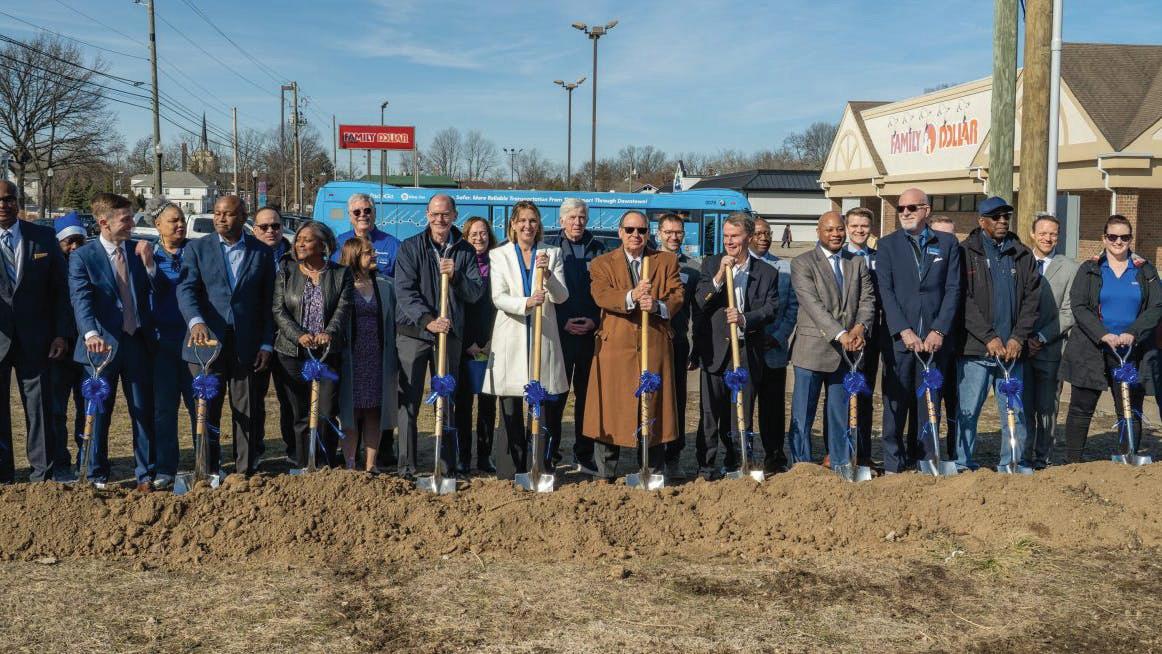
The Indianapolis Public Transportation Corporation (IndyGo) celebrated the groundbreaking of the Blue Line bus rapid transit (BRT) project. Once complete, the 24-mile project will provide rapid transit along Washington Street between Cumberland and the Indianapolis International Airport. This service will replace and improve the existing Route 8. Construction is anticipated to continue through late 2028, when the Blue Line is expected to open for service.
MassTransitmag.com/55272190
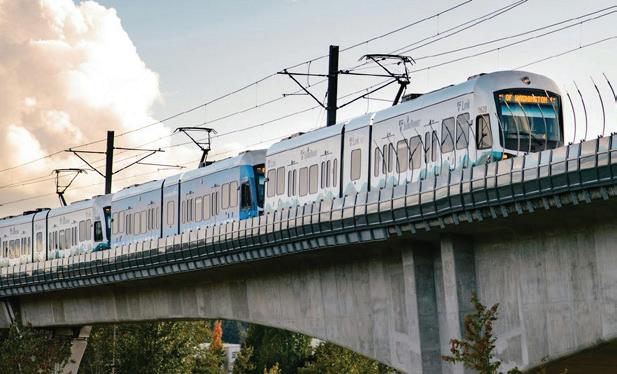
Seattle Mayor Harrell issues executive order to speed up delivery of light rail to West Seattle and Ballard
▶ Seattle Mayor and Sound Transit Board Member Bruce Harrell issued an executive order to improve the coordination of the city’s efforts to
safely and efficiently speed up the delivery of light rail to West Seattle and Ballard, Wash. The Ballard Link Extension will connect downtown Seattle to Ballard with nine new stations, a second downtown transit tunnel and a Salmon Bay crossing. It is expected to be completed by 2039. The West Seattle Link will run from downtown Seattle to West Seattle, with four new stations and a bridge over the Duwamish River, projected to finish by 2032.
MassTransitmag.com/55270838
▶ Field testing for TransLink’s nextgeneration Mark V SkyTrain vehicles began March 8 as a part of the
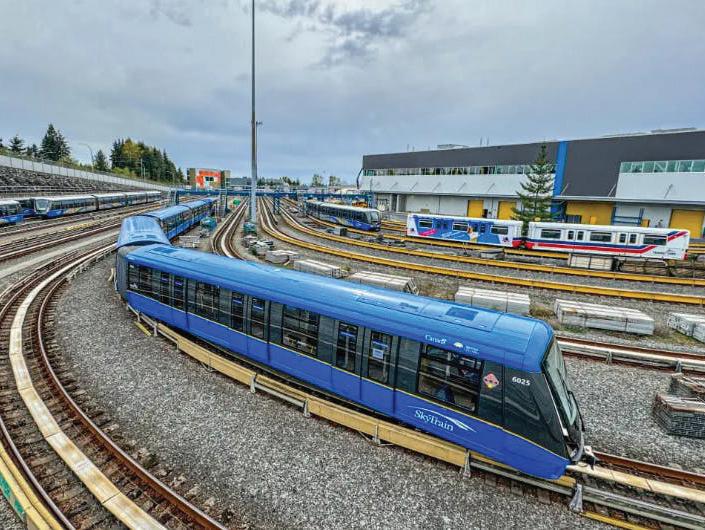
agency’s efforts to ensure the vehicles are safe and reliable before entering service. TransLink will also assess the trains’ on-board systems, performance on the Expo and Millennium lines and the upgrades made to stations to accommodate the Mark V’s longer five-car design. The field testing will continue until the full order of 235 Mark V cars are fully integrated by 2029.
MassTransitmag.com/55273411
SacRT breaks ground on Dos Rios Station project
▶ The Sacramento Regional Transit District (SacRT) has broken ground on the future Dos Rios Station on the Blue Line. The new light-rail station, located on North 12th St. between Richards Boulevard and Sunbeam Avenue, will provide a crucial transit connection for the River District and the Mirasol Village housing community. With site preparation work already underway, major construction will begin this summer, and the station is expected to open by the end of 2026.
MassTransitmag.com/55269448
L.A. Metro’s bus lane enforcement program begins ticketing violators
▶ In partnership with the Los Angeles Department of Transportation, L.A. Metro’s bus lane enforcement program has begun ticketing violators. The bus lane enforcement pilot program is rolling out on major corridors where bus lanes have been established to prioritize public transit in areas with high bus ridership and traffic congestion.
MassTransitmag.com/55269091


The transportation industry is undergoing a massive transformation as digital solutions and data-driven technologies rede ne how people travel. At the forefront of this revolution are platforms like Moova, developed by Almaviva, and ClearGuide, a platform by Iteris, a company that was recently acquired by Almaviva and joined its group. Together, these solutions are reshaping the future of mobility, from enhancing passenger experiences to improving safety, ensuring a smarter, safer and more e cient transportation landscape.
How does account-based ticketing (ABT) play a pivotal role in the digital transformation of transport operators and how does Almaviva contribute to this shift?
ABT is essential for the evolution of digital transportation systems, o ering signi cant bene ts for both users and operators. By linking a passenger’s ticket to their account, ABT enables seamless travel across various modes of transport using multiple identication methods (contactless cards, smartphones, apps, QR codes or online accounts). is exibility ensures a personalized and e cient experience, with travelers paying the best fare based on their trips over a set period, including automatic application of discounts or charges, such as for companies or universities. Moova is natively ABT, helping transport operators smoothly adopt this approach. It accelerates the digitalization process, enabling operators to o er integrated and customized services while optimizing fares and reducing operating costs. Real-time access to sales and usage data further supports operators in decision-making. Additionally, ABT simpli es the integration among transportation providers, reducing engineering costs and improving the overall user experience.

What makes Moova stand out in addressing the growing need for real-time, customer-centric mobility solutions? Moova’s strength lies in its ability to be both people-centered and multimodal, focusing on the traveler at every stage of their journey. With real-time information and updates, the platform ensures passengers always have the most relevant and accurate details to make their travel more e cient. is approach allows transport operators to o er an integrated solution that adapts to passengers’ needs, whether they’re commuting by bus, train or another mode of transport. Moova makes it easier for passengers to navigate their journeys with more control, e ciency and fewer barriers, enhancing the overall mobility experience.
With increasing security challenges in modern mobility, how does Moova enhance safety and protection for both passengers and infrastructure? In today’s fast-paced mobility landscape, ensuring safety and security is more complex than ever. Issues like overcrowding, illegal entry, cyber threats and infrastructure vulnerabilities require advanced solutions. Moova addresses these challenges head-on by leveraging artificial intelligence (AI) -powered technology to o er real-time monitoring, video analytics and auto-alerts. ese capabilities enhance security across the transportation ecosystem, detecting potential threats before they escalate.
With Moova’s advanced AI platform, transport operators can proactively manage risks and respond more swi ly to emergencies, ensuring the safety of passengers and infrastructure alike.
How is Iteris helping to build safer and more efficient communities through innovative transportation solutions?
Iteris is leading the way in making transportation systems safer and more e cient. With AI-driven solutions, we enhance safety across transit systems and optimizes operations to reduce crashes and improve road conditions for vulnerable road users like pedestrians and cyclists. One of our key o erings, Vantage PedSafe™, improves pedestrian safety by detecting pedestrians in various conditions—including total darkness—powering safety applications and supporting Vision Zero initiatives. e platform provides transit agencies with real-time analytics to make informed decisions that improve pedestrian safety and overall mobility. Additionally, ClearGuide® tra c analytics so ware aggregates complex transportation data and transforms it into actionable insights for smarter decision-making. It helps agencies measure the impact of safety improvements on pedestrian conditions, ensuring that projects align with the broader goal of safer transit environments. Recently, we launched Dash Cam Imagery, which collects valuable visual data from commercial vehicles to help identify safety concerns, enhancing real-time responses and further improving community safety. Together, these innovations empower transit agencies to proactively address risks, streamline operations and create safer communities where transportation bene ts everyone.
About the authors


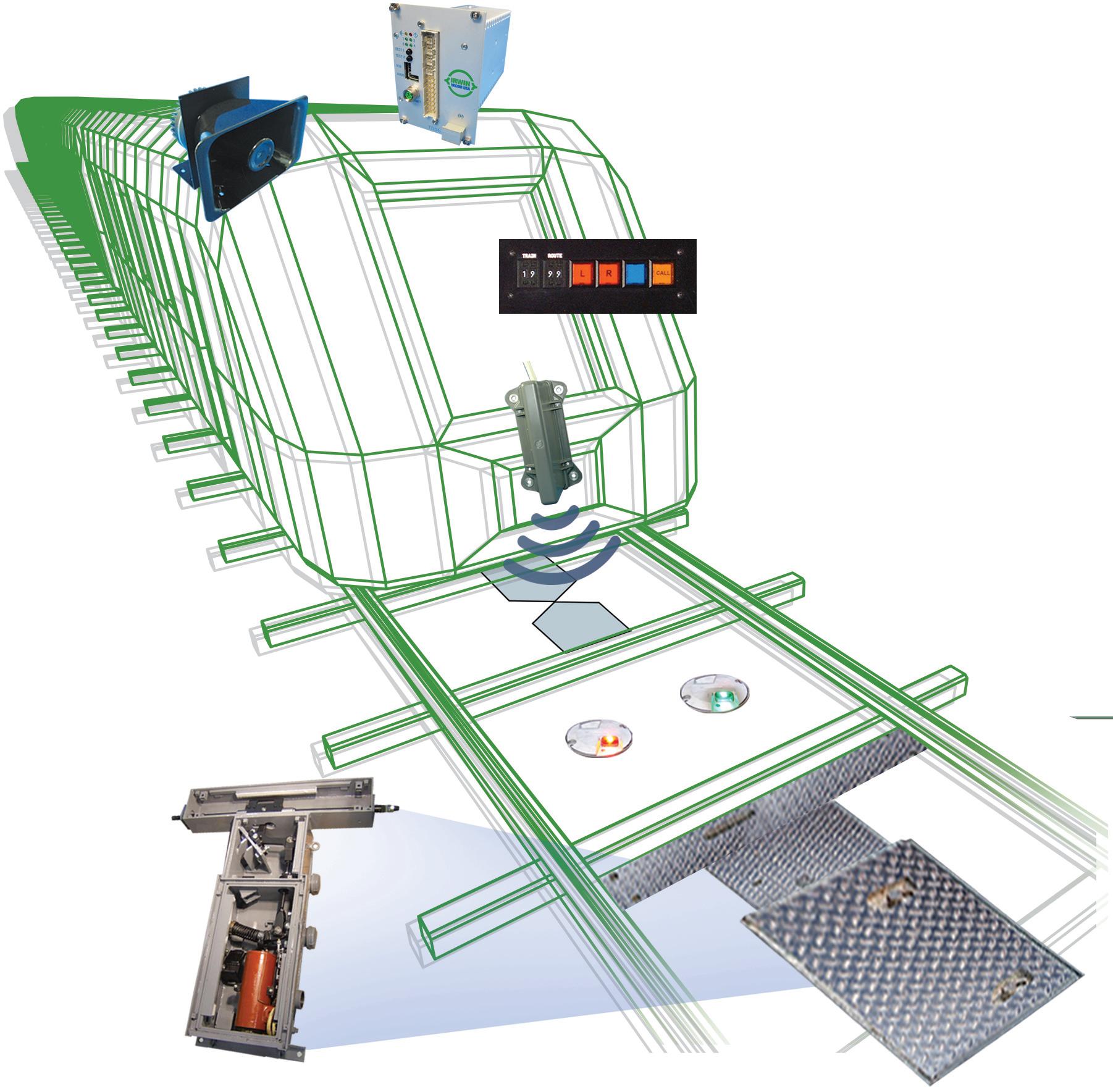
+ Automatic Loop Scanner Hands-Off, Always 100% Tuned
+ Remote Access Through Web Browser
Cabinet comes complete with Interrogator and...
> Track Switch Control
> Point Indication
> Traffic Signal Preemption
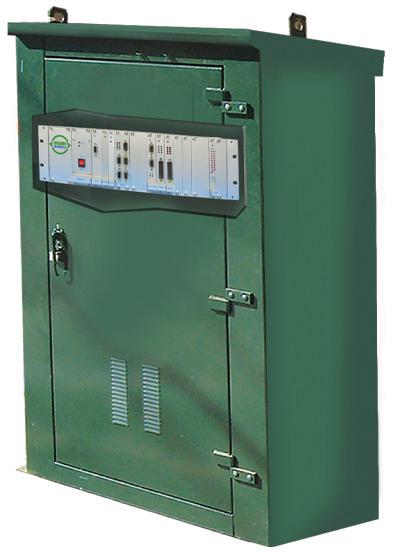




Our products, services, and certifications include:
• Car Door Thresholds
• Ramps, Steps, Trapdoors & Step Wells
• Modern Integrated Manufacturing Capabilities
• AWS Certified Welding
• Custom Design & Engineering Capabilities
• ISO 9001 Certified
We offer metalworking, plasma spray, powder coating, and finishing to ensure superior craftsmanship, quality, and durability.
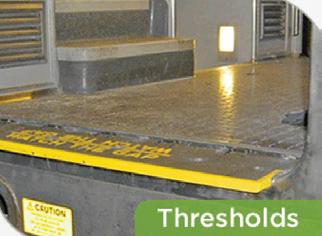
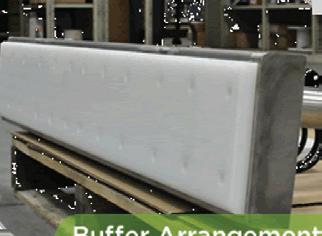
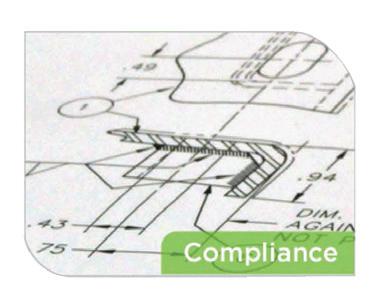
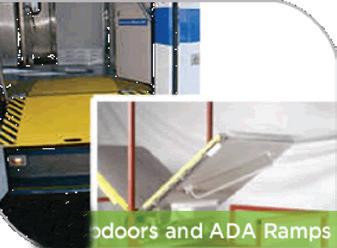
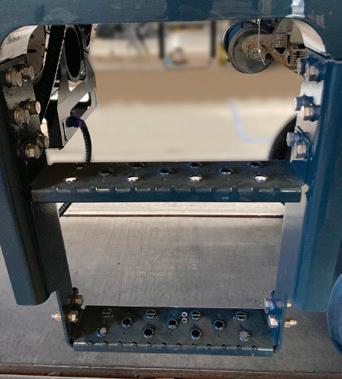
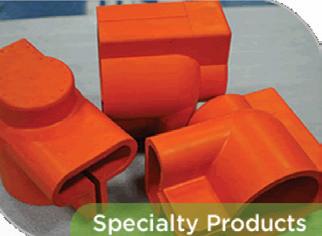

ukmco.com
fweisbecker@irwincar.com

Since 2006, Gray Manufacturing Industries (GMI) has been supplying transit agencies with overhaul kits for the in-house maintenance of rail vehicles.
Our expertise in project sourcing and reverse engineering of components no longer supported by OEMs helps transit agencies prolong the operating lives of their vehicles.
Our customers include the Chicago Transit Authority, Niagara Frontier Transportation Authority (Buffalo), and Southeastern Pennsylvania Transportation Authority (SEPTA – Philadelphia).
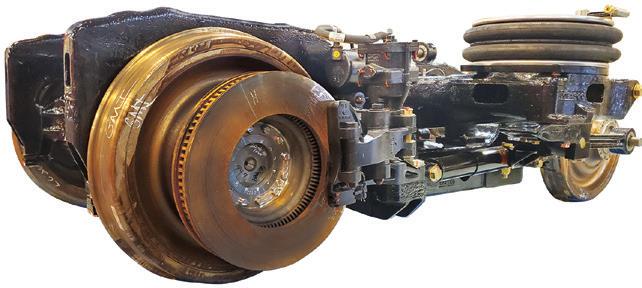
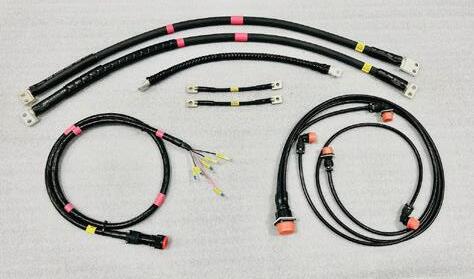
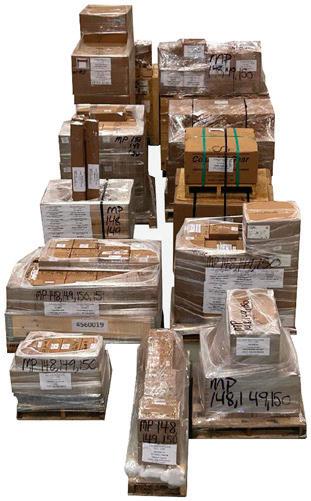
gmihornell.com tcharles@irwincar.com

Danielle Elkins has been appointed as the agency’s deputy executive director of planning, programs and policy. In her new role, she will oversee CCTA’s long-term planning initiatives, funding programs and policy development. She brings deep expertise in emerging mobility technologies, transit accessibility and multimodal integration, having led major transportation initiatives across the country.
MassTransitmag.com/55273091

Denver RTD selected Angel Peña as the agency’s inaugural deputy CEO following a national executive search. Peña brings nearly 25 years of experience in both the public and private sectors. In this role, he will lead the day-to-day operations and management of multiple Denver RTD departments and divisions, including capital programs, safety and environmental compliance, civil rights, contracting and procurement and planning.
MassTransitmag.com/55271558

Julie Kirschbaum was named the permanent director of transportation after serving as acting director since Jan. 1, 2025. She is the first woman appointed to this position. She brings two decades of transportation experience, most recently leading the SFMTA’s largest division as director of transit from 2018 to 2024. In this capacity, she guided the agency through the pandemic, where she not only helped rebuild the entire Muni system multiple times, but also improved customer satisfaction ratings.
MassTransitmag.com/55269805
NJ Transit ramps up efforts to replace windows on multilevel rail cars in revenue service
▶ New Jersey Transit (NJ Transit) is working to ramp up its efforts to replace windows on all of its multilevel rail cars in revenue service. NJ Transit President and CEO Kris Kolluri announced the specifics of the plan, which includes completing installation on one-third of the fleet each year for the next three years. NJ Transit notes the replacement of all windows on the entire fleet of nearly 400 multilevel I and multilevel II rail cars in revenue service will be complete by April 2028. In all, more than 13,000 windows will be replaced.
MassTransitmag.com/55272794
MWRTA adds three new heavyduty GILLIG CNG buses to fleet
▶ Three new heavy-duty buses from GILLIG are being added to the MetroWest Regional Transit Authority’s (MWRTA) fleet. The Massachusetts Department of Transportation (MassDOT) notes the buses run entirely on compressed natural gas. The buses will be deployed on the MWRTA’s busiest route, Route 4N, which provides service between downtown Framingham and the Natick Mall. MassDOT notes this is the first time MWRTA will have heavy-duty, larger transit buses in its fleet, with plans to purchase additional buses over the next two years.
MassTransitmag.com/55273723
▶ The Massachusetts Bay Transportation Authority (MBTA) launched passenger service on its South Coast Rail line. This marks the first time in over 65 years that the cities and towns of southeastern Massachusetts will have passenger rail service to and from downtown Boston. The South Coast Rail Program extended the existing Middleborough Commuter Rail Line, reconstructred over 20 miles of track and constructed two new layover facilities and six stations.
MassTransitmag.com/55277131
▶ Metro Transit began service on its Metro Gold Line, the agency’s first of three planned bus rapid transit (BRT) routes that will open in 2025. The Metro Gold Line will provide frequent all-day bus service across a 10-mile stretch of the Interstate 94 corridor, significantly expanding access to jobs, housing and other opportunities. The Gold Line is the first BRT line in Minnesota to operate primarily on a dedicated guideway.
MassTransitmag.com/55277100
VIA Rail Canada launches RFQ to find co-development partner for its Dorval hub project
▶ VIA Rail Canada has launched a request for qualifications (RFQ) to find a co-development partner for its Dorval hub project. With the launch of this RFQ, VIA Rail is seeking to meet two needs. The agency says the investment in the Dorval Station is needed to continue offering passengers facilities that meet their needs. VIA Rail Canada says the investments are also an opportunity for the agency to advance the next phase of a project aimed at better integrating its operations with the public transit services of the Greater Montréal area in one location to offer passengers a more seamless experience.
MassTransitmag.com/55272141

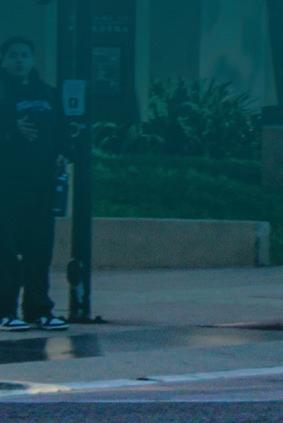
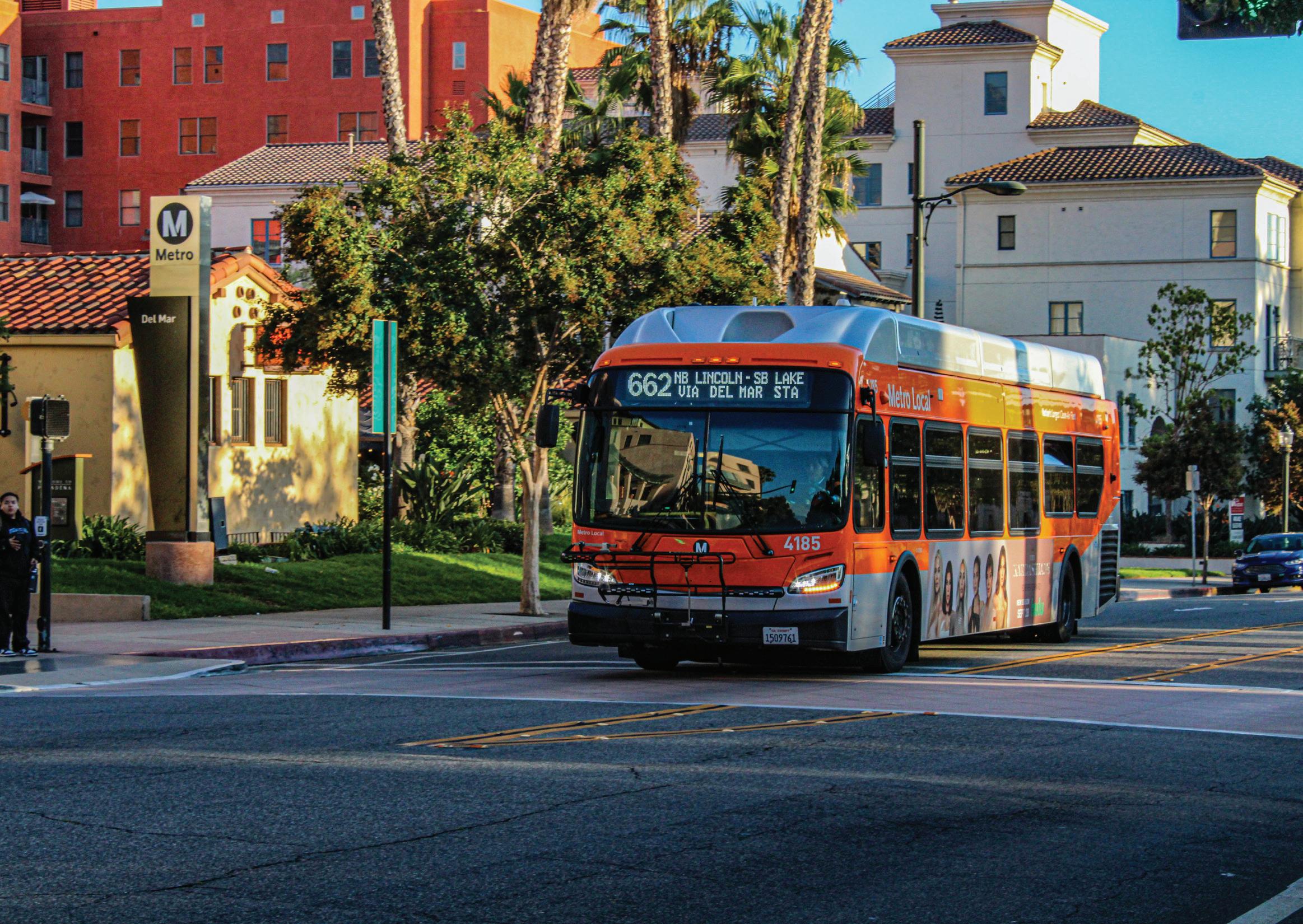
CTA, VIA Metropolitan Transit implement frequency changes on bus routes to improve services
▶ The Chicago Transit Authority (CTA) launched the frequent network, which will allow CTA buses to arrive every 10 minutes or sooner on 20 key bus routes throughout CTA’s service area between 6:00 a.m.-9:00 p.m. on weekdays and 9:00 a.m.-9:00 p.m. on weekends. VIA Metropolitan Transit’s Board of Trustees approved a plan on March 4 to increase frequency on five key routes, reducing wait times and providing faster connections for riders on both weekday and weekend trips. MassTransitmag.com/55272474
Nashville Mayor O’Connell begins implementation of Choose How You Move Transportation Improvement Program
▶ Nashville, Tenn., Mayor Freddie
O’Connell has launched 11 transit projects to begin the implementation of the voter-approved Choose How You Move Transportation Improvement Program. The program aims to remake Nashville’s transportation system by building 86 miles of sidewalks, expanding transit to a 24/7 operation, increasing the frequency of transit service on Nashville’s busiest roadways, increasing safety for all roadway users and modernizing tra c signals at more than 600 intersections.
MassTransitmag.com/55130768
▶ Sound Transit began its wig wag pilot March 11. The technology uses a pattern of flashing lights that are tied to the train’s bell and horn systems that begin flashing when triggered by the operator.
MassTransitmag.com/55276492

MORE NEWS AT A GLANCE
▶ Endera’s electric B4 shuttle bus has passed the Altoona durability testing. MassTransitmag.com/55274358
▶ The San Francisco Municipal Transportation Agency has contracted New Flyer of America for 42 Xcelsior® 40-foot hybrid buses.
MassTransitmag.com/55273402
▶ AECOM was selected by the San Fernando Transit Constructors joint venture team to advance the Phase 2 final design for Los Angeles County Metropolitan Transportation Authority’s East San Fernando Valley Light Rail Transit Project.
MassTransitmag.com/55271859
▶ Hayden AI partnered with Culver CityBus to launch an automated enforcement program using the company’s perception technology to keep lanes and stops clear for buses. MassTransitmag.com/55276514
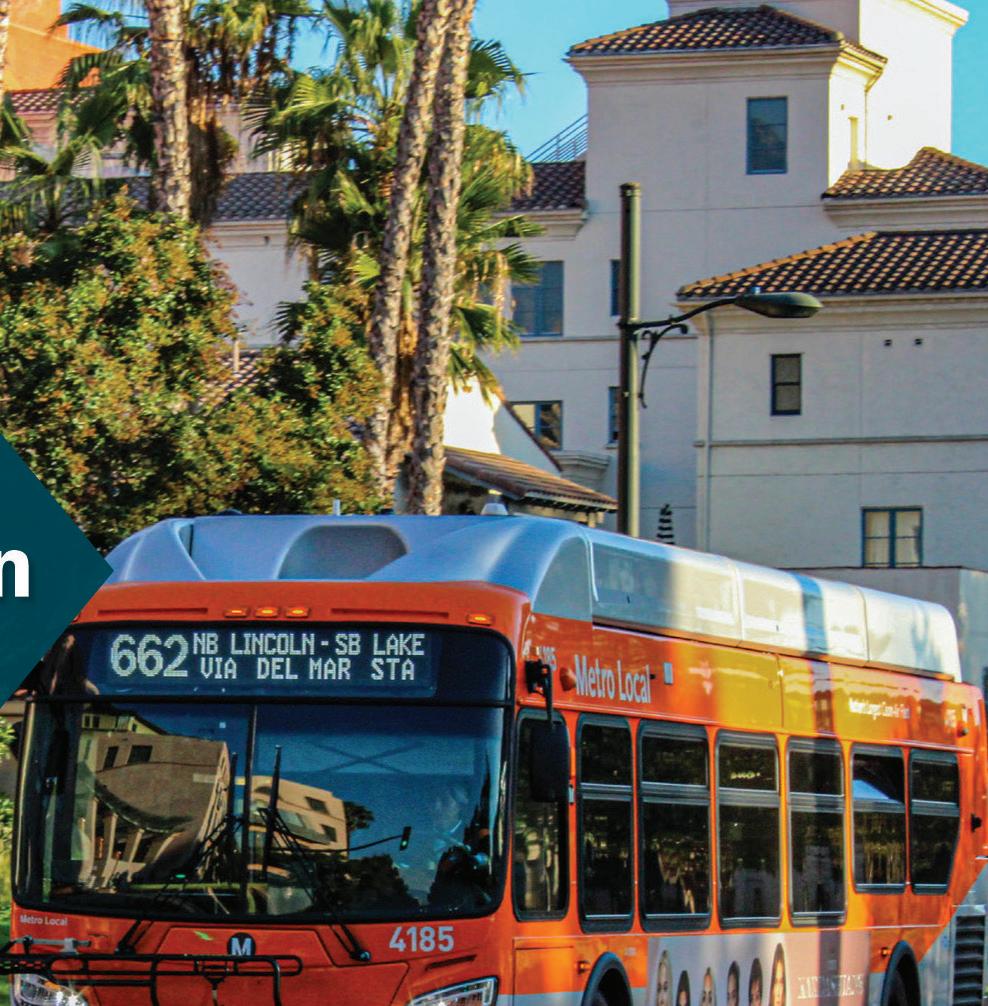
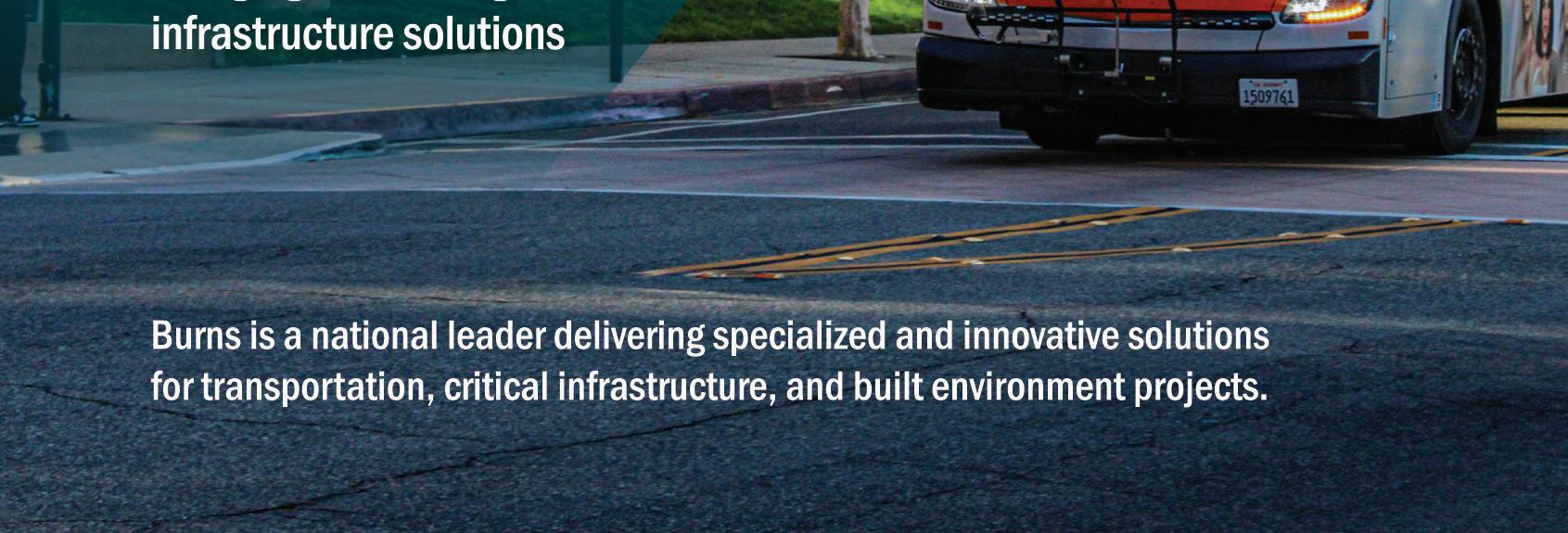
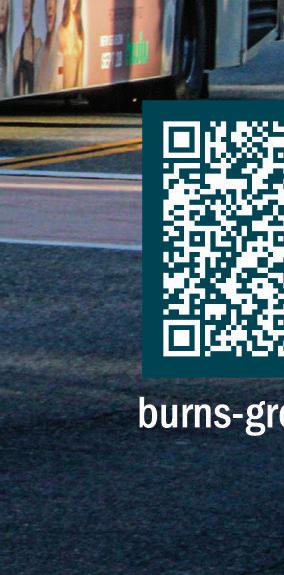


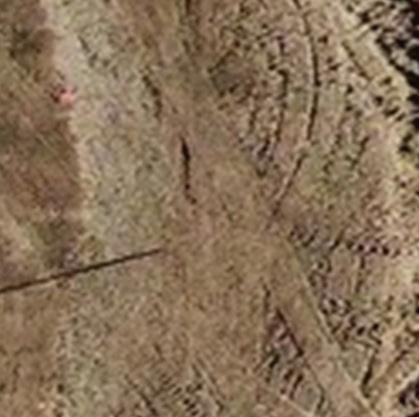

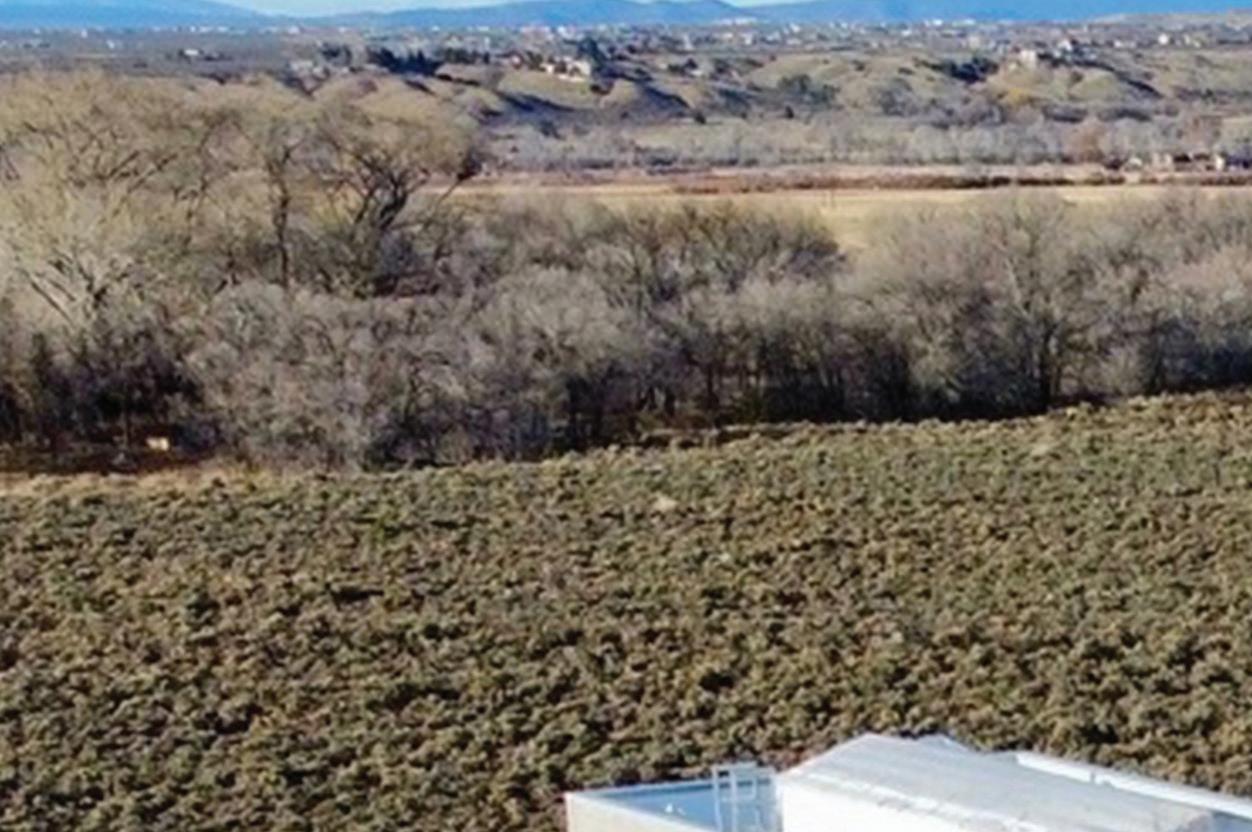
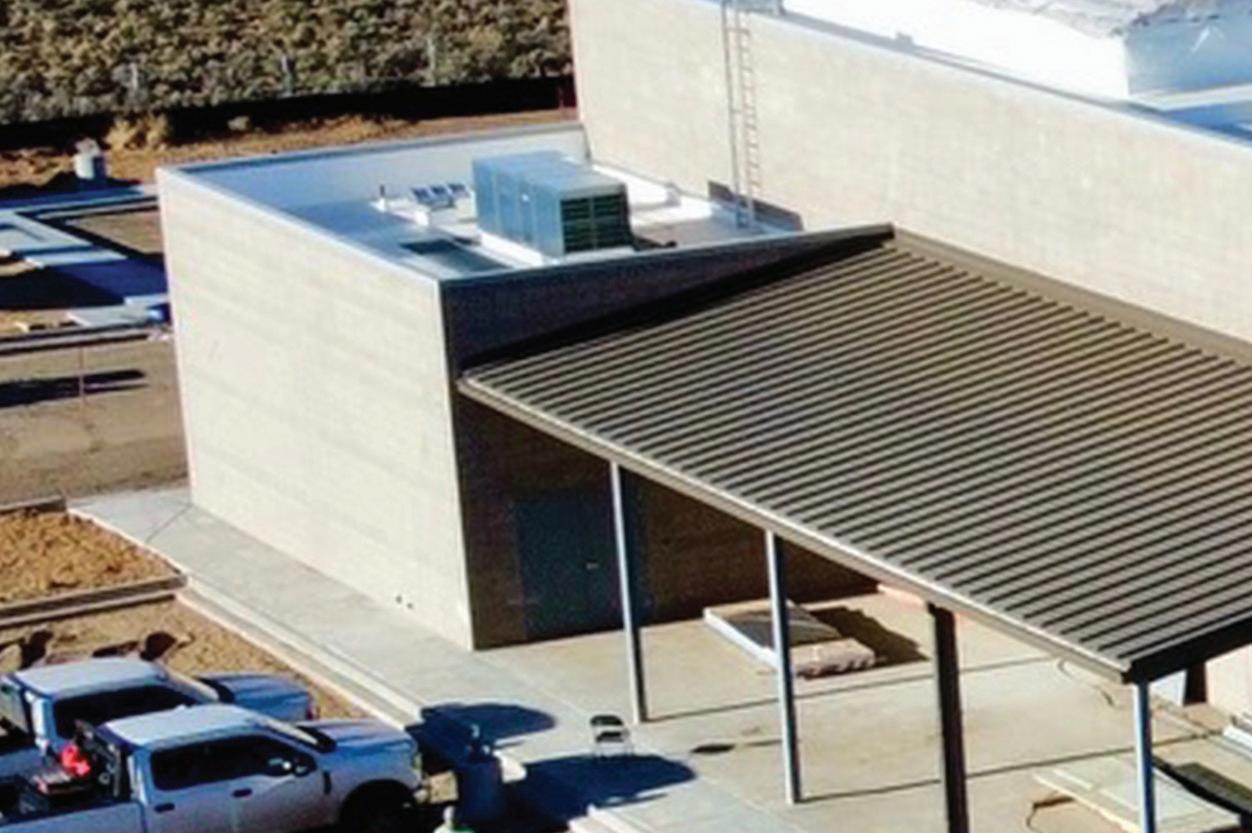
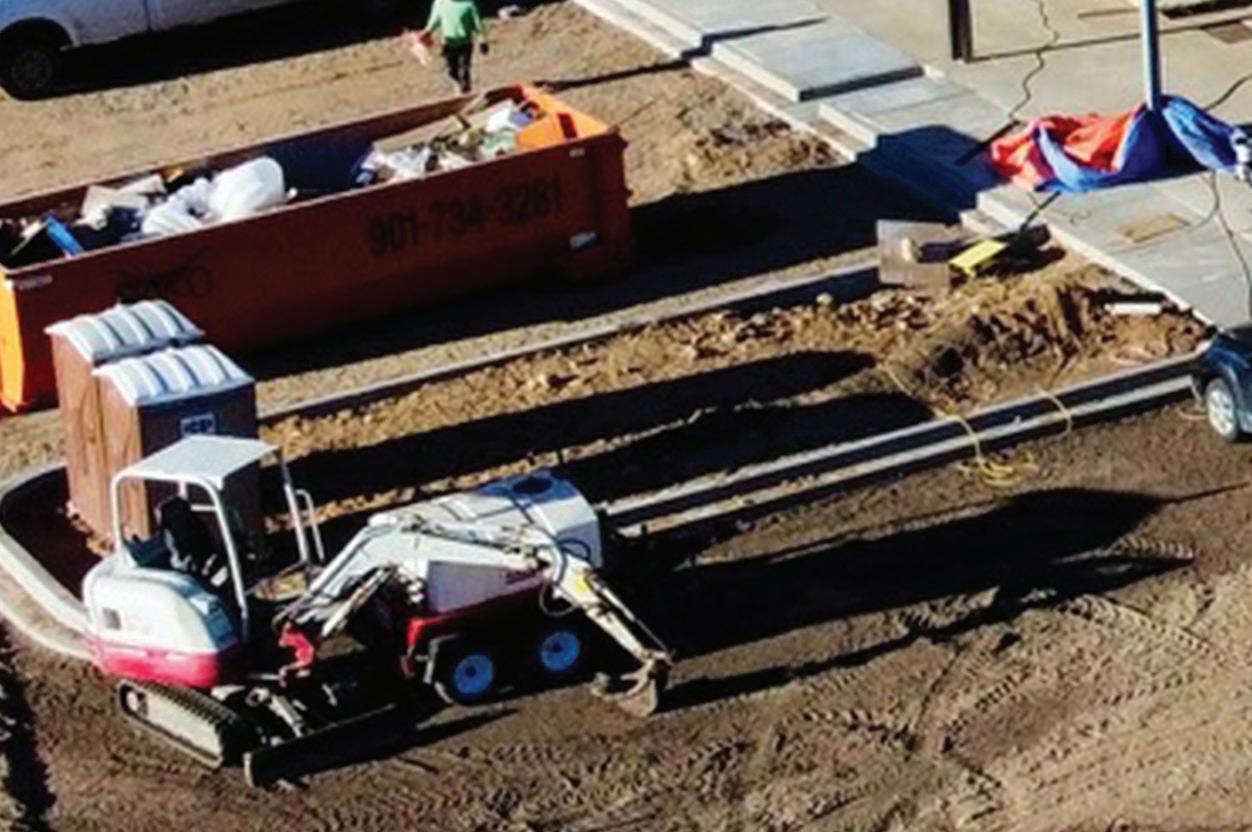


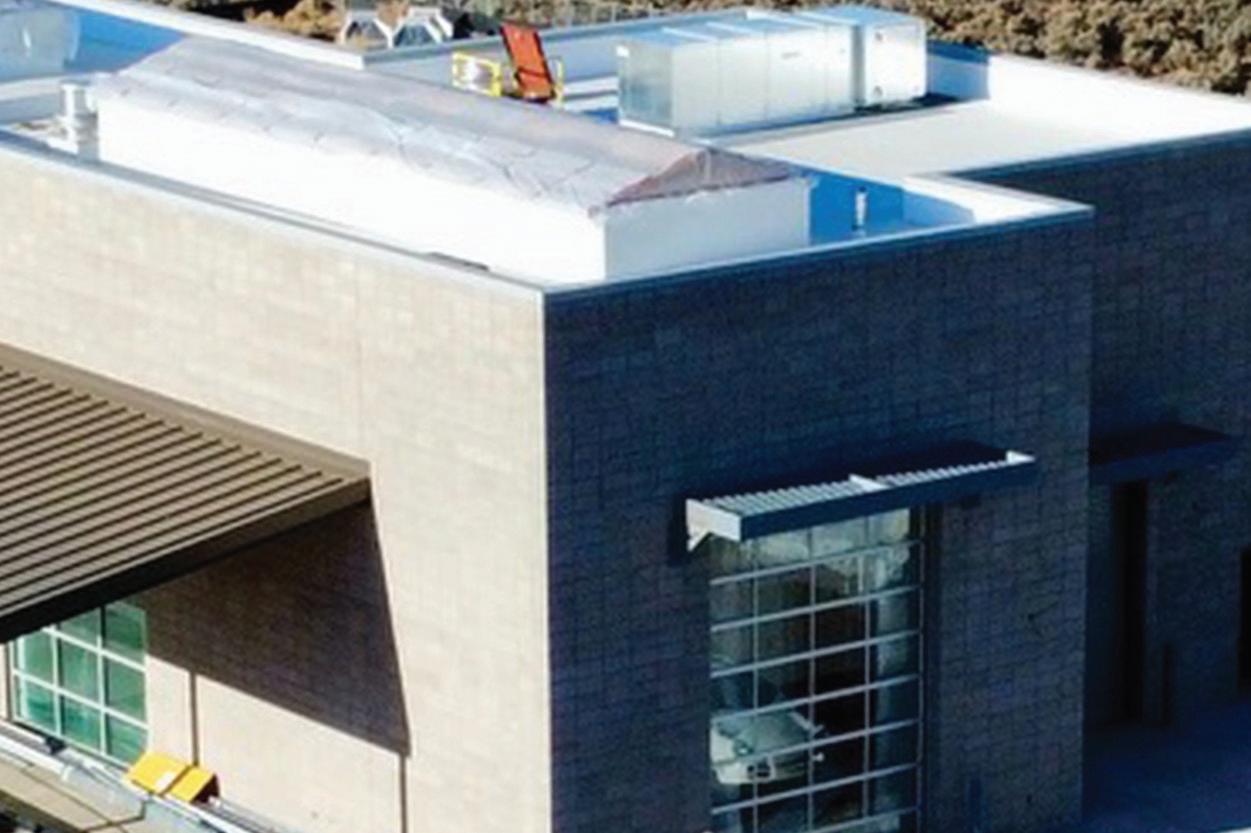
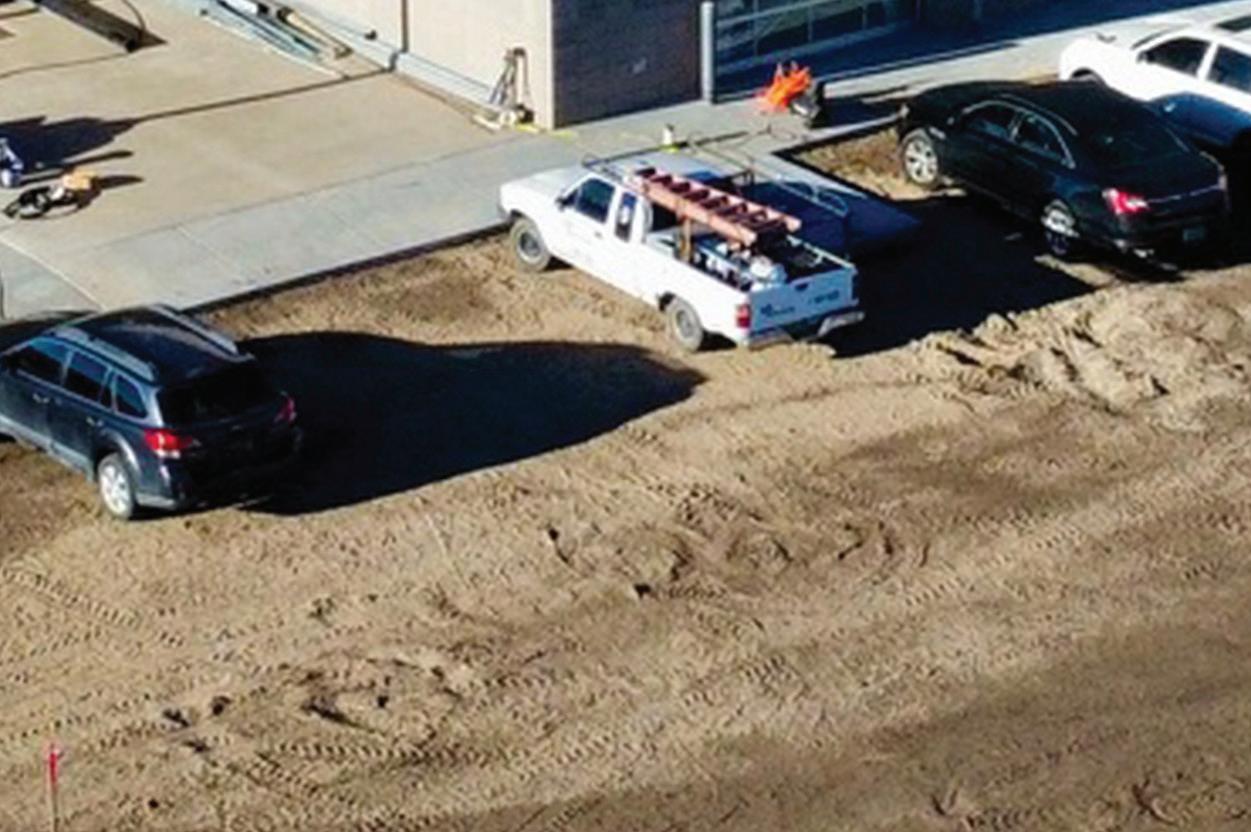
The agency is building a new maintenance facility, transitioning its fl eet to zero emissions and building a new rapid line so residents can have better transit access in the 10,000 square mile service area.
BY BRANDON LEWIS, ASSOCIATE EDITOR



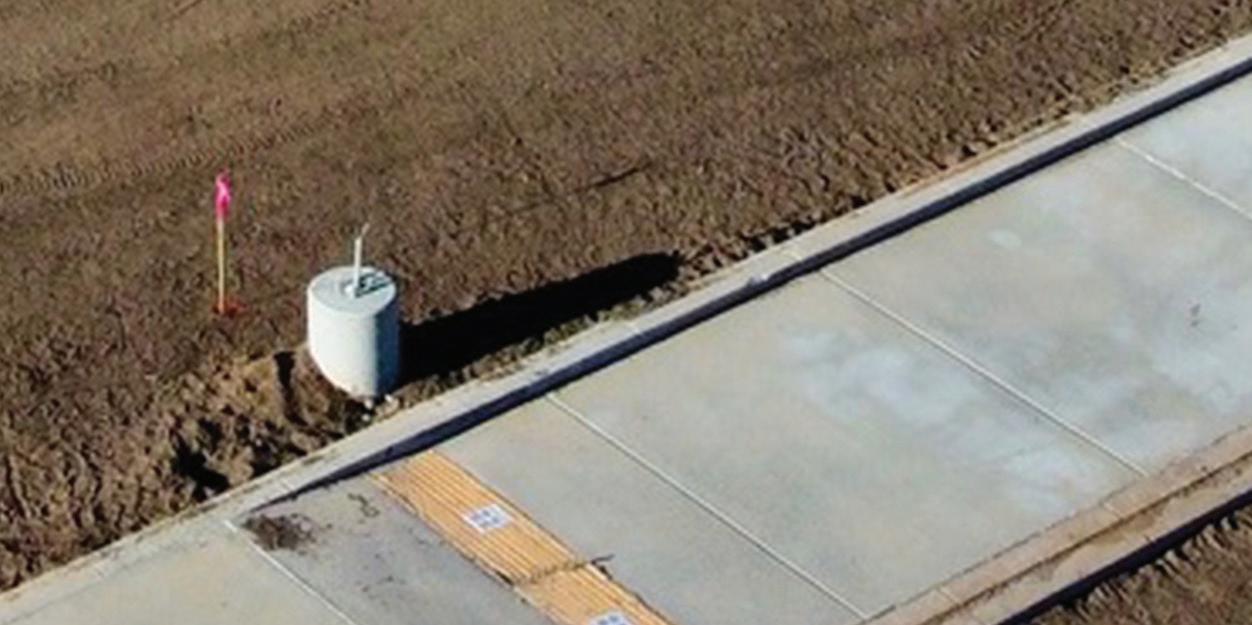
The North Central Regional Transit District (NCRTD) is a transit agency that operates in the rural areas of Los Alamos, Rio Arriba, Santa Fe and Taos, N.M. According to the Health Resources & Services Administration, rural areas are dened as “outlying metropolitan counties with no population from an urban area of 50,000 or more people.”
Mortillaro notes the other 33 percent came from NCRTD as a local match.
According to NCRTD Executive Director Anthony Mortillaro, being a rural agency has its bene ts and challenges.



“We cover over 10,000 square miles for counties, and within there, there’s about 70 communities—both incorporated and unincorporated cities, towns, villages and traditionally existing areas that we provide service to, along with eight Indian Pueblo communities and one tribal nation as well; so our community is very diverse, but part of the challenge with that is less frequency and longer routes,” Mortillaro said.
Mortillaro, who will be retiring from the agency in June a er serving as executive director of NCRTD since 2011 and has more than 30 years in the transit industry, notes that some of NCRTD’s routes can be 180 miles one way. He says longer routes means there is a higher cost per passenger per mile for the agency.
e agency o ers transit options via bus, commuter bus and microtransit. Most of the options the agency provides o er transportation from 6:00 a.m. to 7:00 p.m. Monday through Friday. One of NCRTD’s most-used routes, the 255 Mountain Trail route, provides service through the Santa Fe National Forest area and is fare-free 365 days a year. e MyBlue microtransit option serves the Española, Edgewood, Pojoaque-Nambé and Taos areas and allows riders to schedule their rides up to 30 minutes in advance through either the MyBlue mobile app or over the phone. Fares are $1 per ride, except for paratransit, which is absolved from fares.
To improve services in the area, NCRTD is currently working on three major projects:
• Construction of the Taos Maintenance Facility.
• Transitioning to a zero-emissions eet.
• Integrating a rural rapid transit network.
e projects are all part of the agency’s Long-Range Strategic Plan, which was released in 2023 and created to identify the direction of the organization during the next two decades.
NCRTD broke ground on the Taos Maintenance Facility in 2023. e facility will sit on a six acre site and will feature 7,200 square feet of administrative space and 10,800 square feet of maintenance space, including two maintenance bays, a fueling facility and a battery-electric bus (BEB) charging facility.
Mortillaro notes the agency spent ve years planning the project before breaking ground in 2023. NCRTD received various sources of funding for the $17 million project, including:
• $6.6 million from the Federal Transit Administration’s Bus and Bus Facilities Grant program.
According to Mortillaro, the agency learned its lessons from its rst facility project, the Española Maintenance Facility. He explains the biggest challenge on the Taos facility was nding contractors to do the work. NCRTD ended up going with Weil Construction for the project, who also did the Española project.
“ e two main bidders that bid [on the project] were from the Albuquerque area. at’s over 120 miles away, and then there were no local subs that bid the project. All the contractors and subs had to come from the Albuquerque area, so as a result of that, that ampli ed the cost for the project,” Mortillaro noted.
Mortillaro explains the project scope did not change due to the contracting issue.
“We had sufficient funds to offset the additional cost for the project due to not having any local contractors,” Mortillaro said.
e agency expects to open the facility in spring 2025.
NCRTD launched its plans to transition its eet to zero emissions in June 2023.
e agency hopes by 2027 to have 25 low- or no-emission vehicles, including:
• 10 electric vans (currently in service)
• Nine hybrid-diesel buses
• Six all-electric buses
e agency has three separate contracts with bus manufacturers for the zero-emission vehicles:
• Electric vans: Ford
• Hybrid diesel vans: New Flyer of America
• BEBs: GILLIG
According to Mortillaro, the process of selecting which buses and vans would t which route was a detailed one.

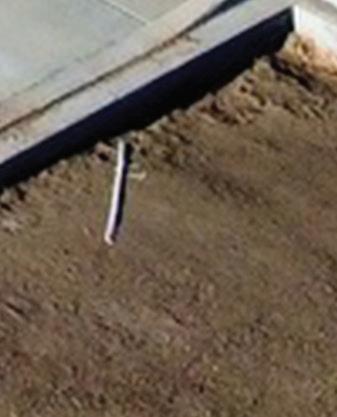
• $5.9 million in Infrastructure Investment and Jobs Act funds. e federal funding covered 67 percent of the project.
“What we did with the battery electric [vehicles] is we used CTE, our project consultant on this project, and we had them model the routes that we’re gonna put the battery-electric buses on. So, they modeled three of the routes in Taos and three in Española,” Mortillaro said.
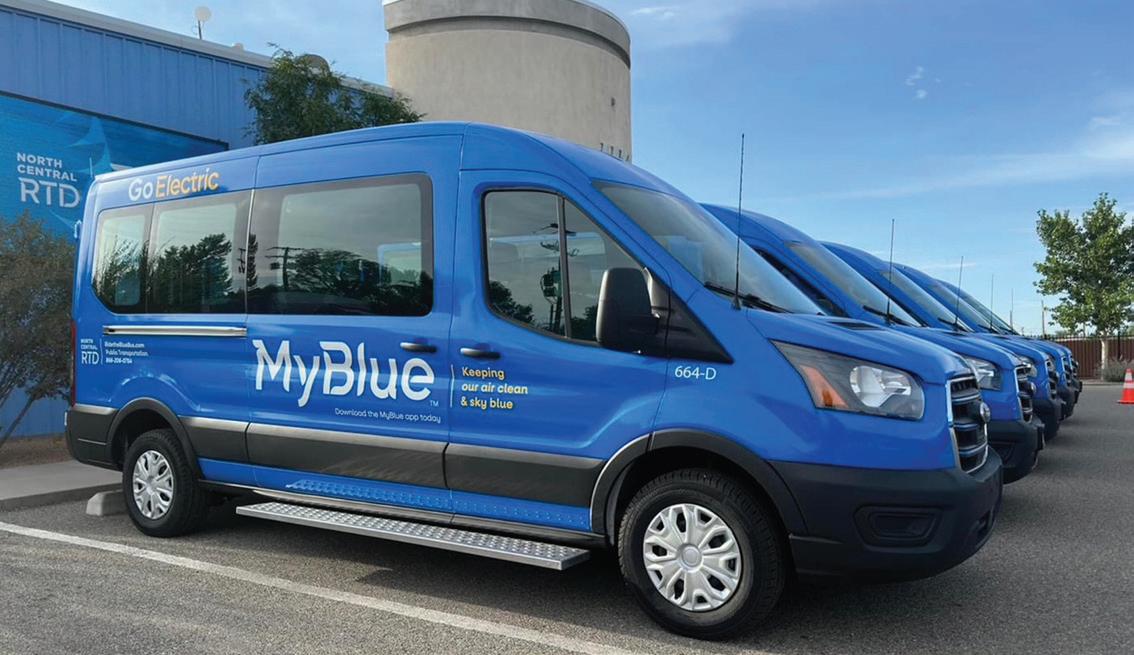
Mortillaro says BEBs were a better option for the agency than hydrogen fuel-cell electric buses due to the lack of hydrogen fuel infrastructure.
“There isn’t any [hydrogen fuel infrastructure] in Española or Taos or New Mexico, so it would either need to be trucked in from an adjoining state, or we would need to build a hydrogen generation plant. Either option was too expensive,” Mortillaro noted.
He adds GILLIG had the longest lasting battery for the routes that the buses will be traveling on compared to other BEB brands. The routes have also been predetermined to eliminate the need to charge the buses during service hours.
“The GILLIG buses have a 648-kilowatt battery, and that one, based on our route design and everything, we would not have to do any mid-route charging. We can just overnight charge and then we’d have enough battery capacity at the end of the routes to still have some battery capacity left over,” Mortillaro noted.
The vehicle procurements did not impact the design of the Taos Maintenance Facility, where the agency plans to charge the buses overnight.
The rural rapid transit network is the consolidation of existing fixed routes that operate along the corridor between Taos, Española and Santa Fe into one rapid route. According to NCRTD Planning and Projects Manager Bryce Gibson, some local routes will remain, and areas that are no longer served by the fixed route will instead be served by microtransit. The service will also allow for expanded hours in the future, including an increase in on-demand rideshare services, to provide intermodal connections between NCRTD’s fixedroute services and the on-demand services.
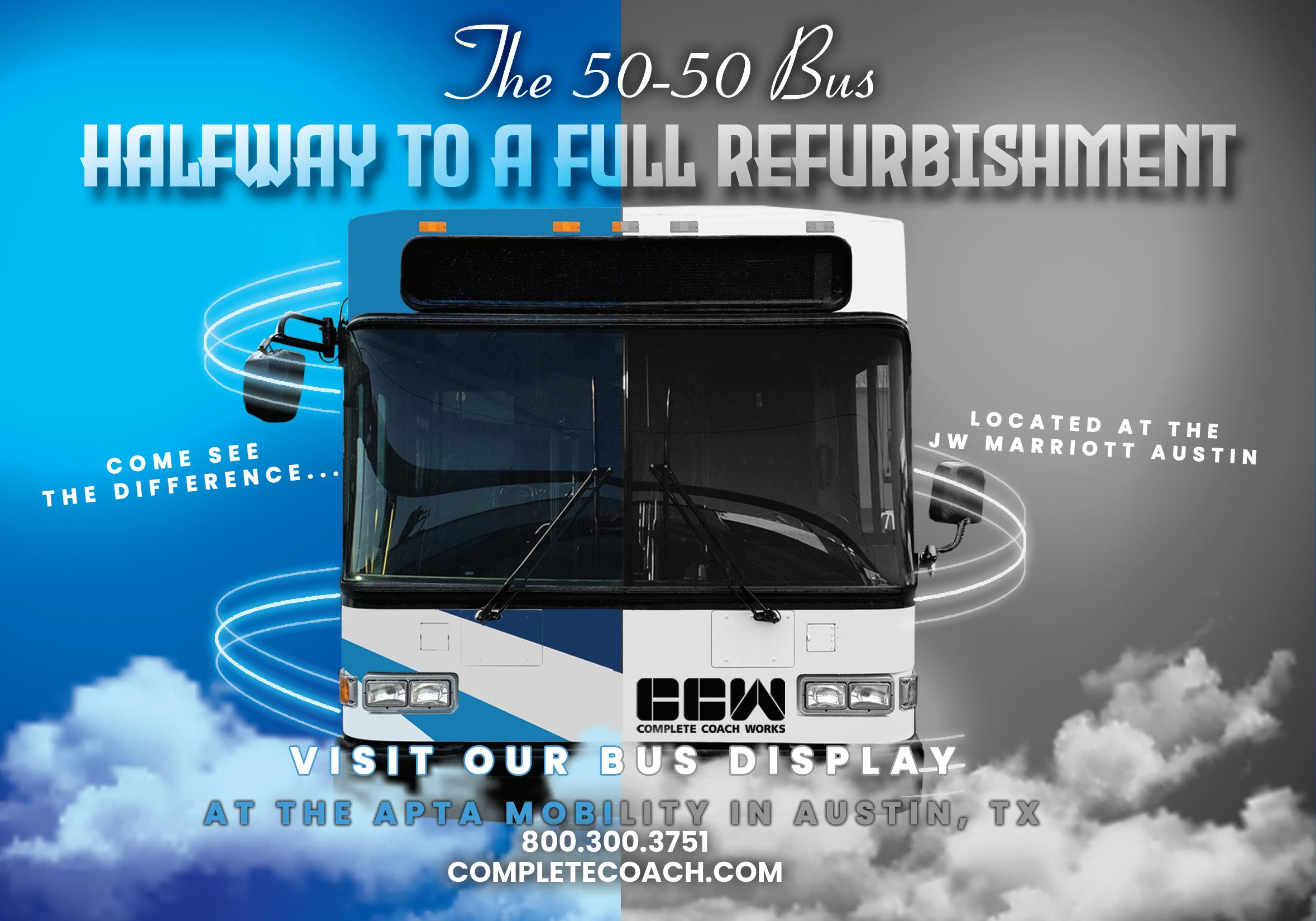
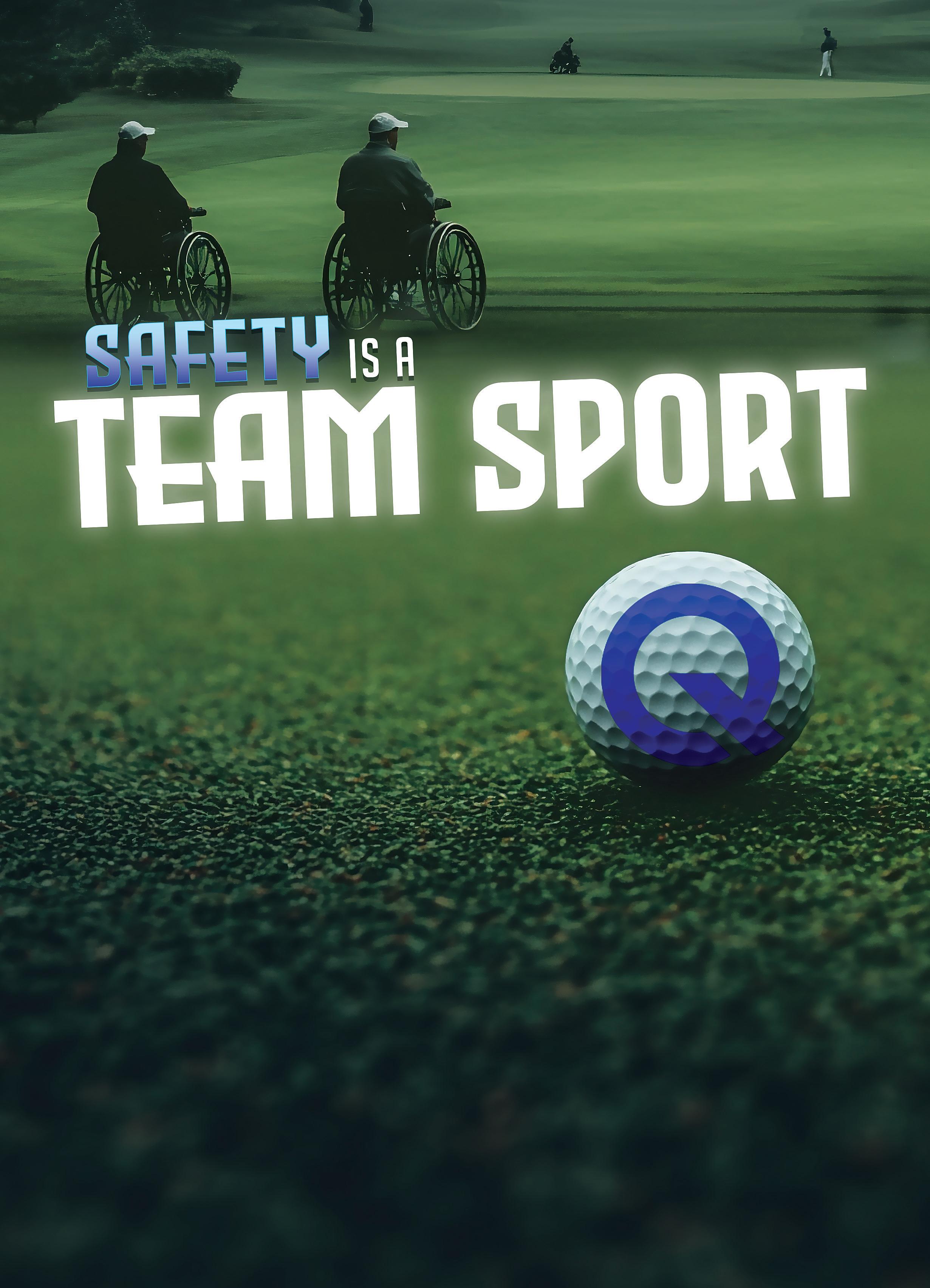
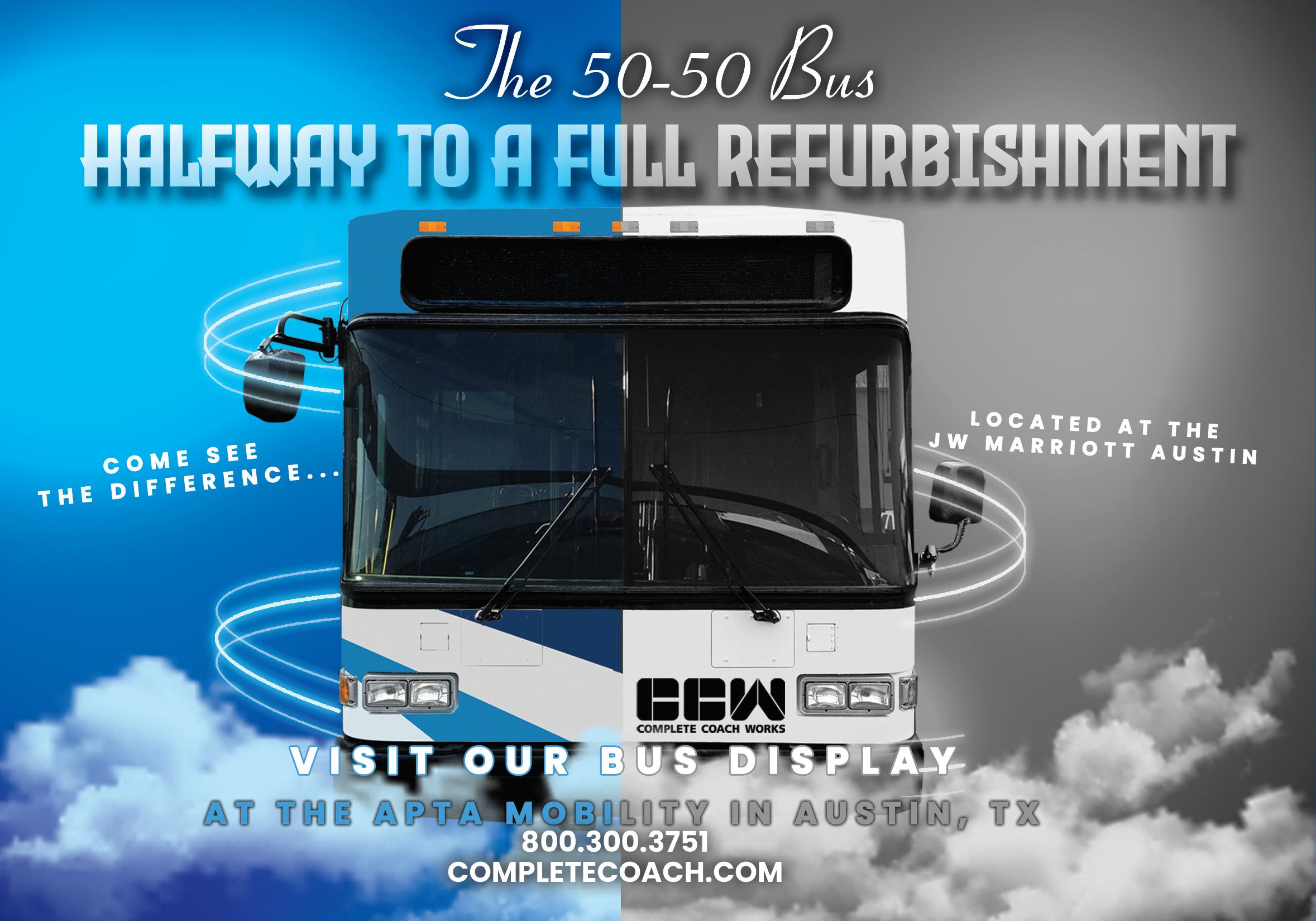
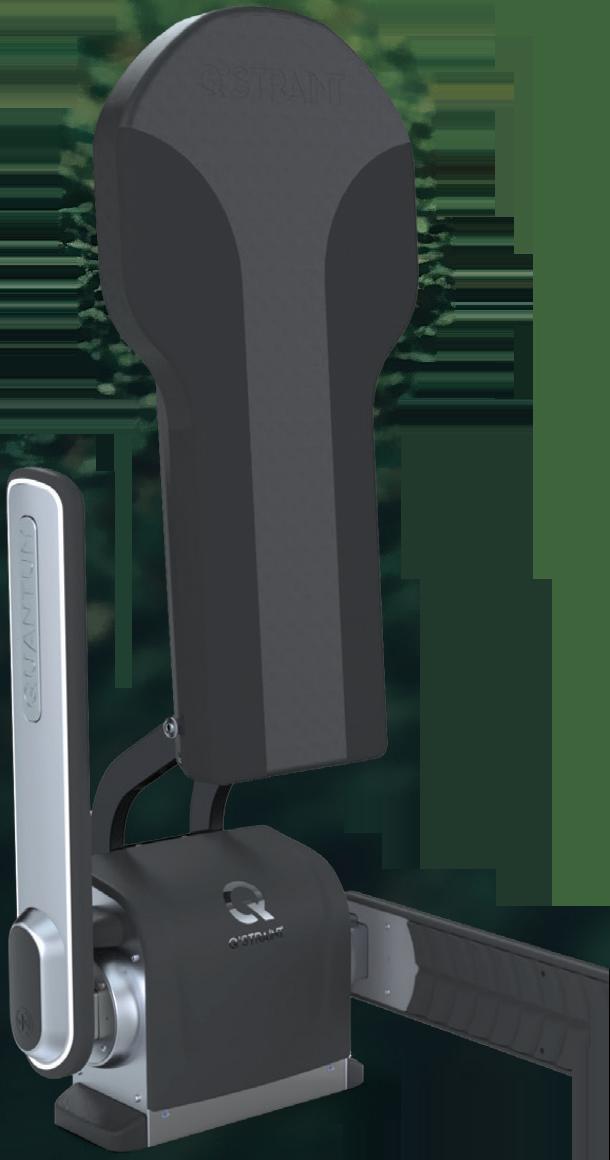
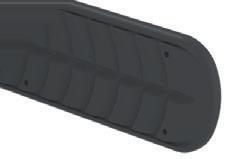




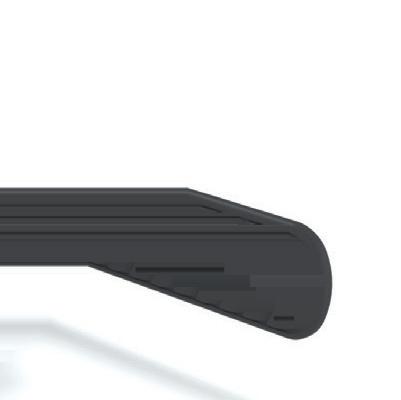


Beginning in Taos, the route will be approximately 70 miles each way, and will travel along NM-68 to Española and then take US-285 to Santa Fe. Gibson notes the northern portion of the route travels through a canyon and some frontier lands and adds that the NM-68 route is quite hilly and rugged.
NCRTD’s rural rapid transit network is similar to a bus rapid transit system but has some key differences according to Gibson, who notes the rural rapid transit network doesn’t have any separate right of way.
The project is currently in the implementation plan and will be completed in phases, with the first phase consisting of the construction of seven mobility hubs, as well as seven hybrid-diesel buses. Phase one will be funded by a $9.5 million U.S. Department of Transportation Rebuilding American Infrastructure with Sustainability and Equality grant to allow the agency to purchase seven of the nine hybrid-diesel buses. Gibson notes the plan calls for a total of 21 zero-emission vehicles along the route, but due to the nature of the route, including the longer distance, the agency believes hybrid-diesel buses are currently the best option.
“There are a lot of moving parts to this, but hopefully within the next two or three years we’ll be able to start seeing an increase in service related to this project,” Gibson said.
Gibson notes the mobility hubs will be strategically located along the route. Some hubs will be a bus stop with a shelter
while others will have more amenities and look more like a transit station. The agency is currently in the process of planning the locations of the hubs.
According to Gibson, NCRTD plans to implement rider feedback into the rural rapid transit network via open houses and surveys.
In 2024, the agency not only celebrated its 20-year anniversary, but it won the Community Transit System of the Year Award – Small System, which was presented by the Community Transit Association of America. The award goes to transit agencies who serve rural communities with 50,000 or less people.
Gibson says the award signifies the unity NCRTD employees have.
“I’m really proud of the work that we have been able to accomplish here in NCRTD. We’re on the forefront of transit for the regional community. We’re a leader, and we are working really hard to develop our facilities and resources in a way that we can benefit our passengers greatly in the future,” Gibson said.
Mortillaro echoed Gibson’s sentiments.
“The district has grown immensely over that time period in both service levels and assets,” Mortillaro said.
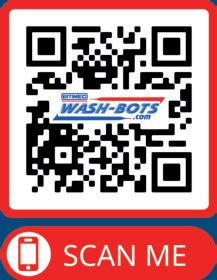
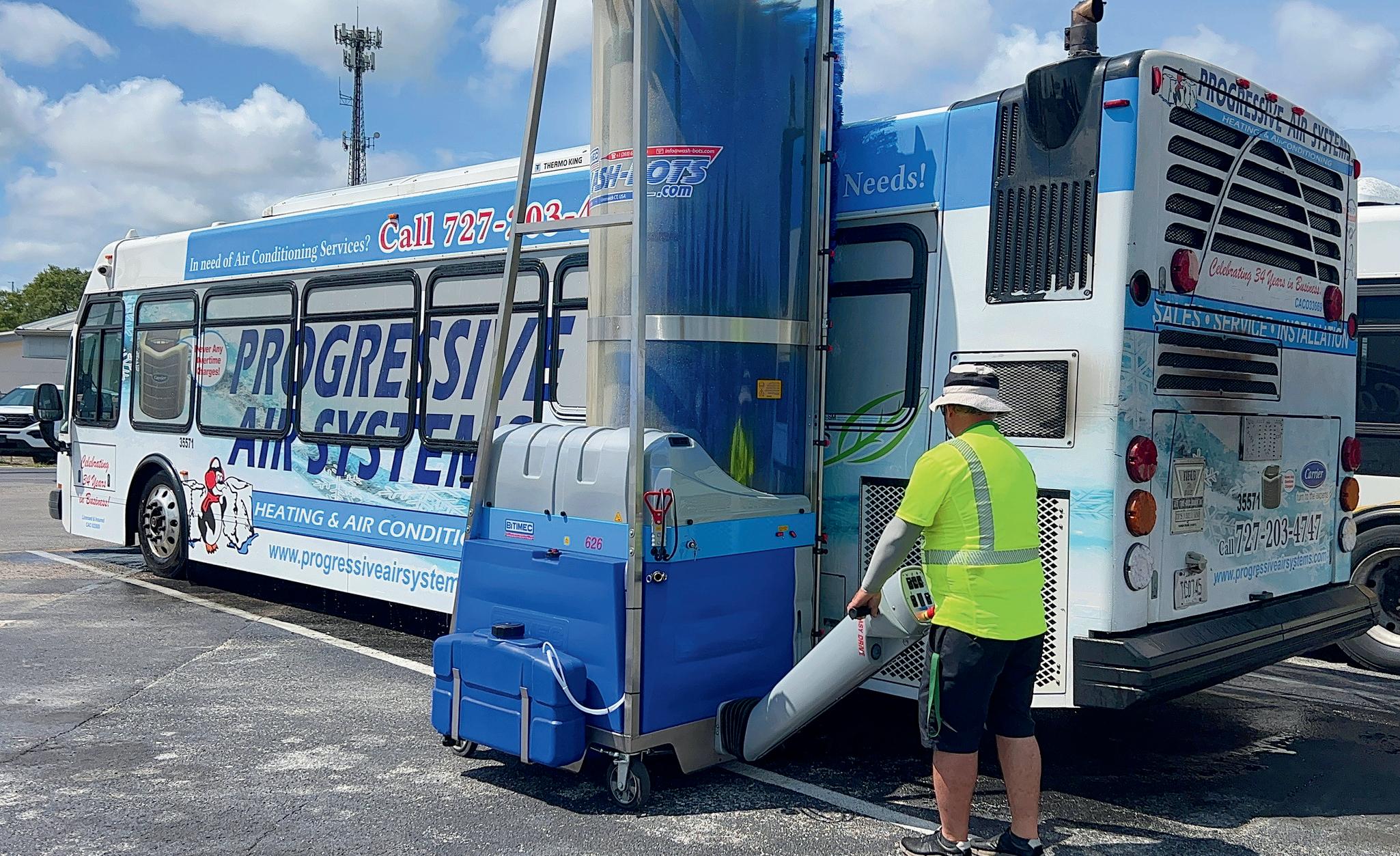



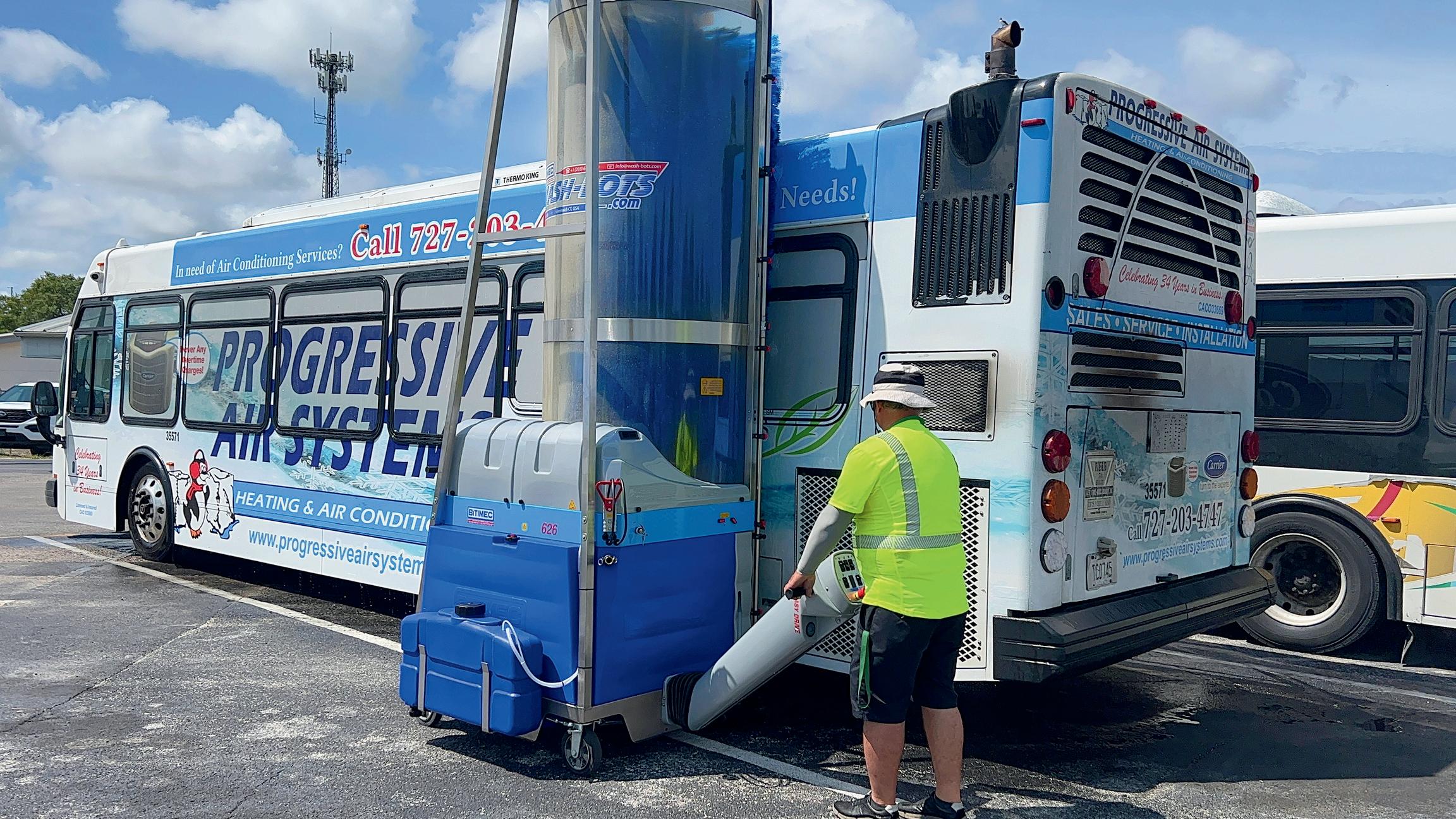

We are passionate about harnessing the power of technology to protect your video and data files on our hosted servers, ensuring top-tier security without third-party involvement. We are your trusted partner in mobile video surveillance, ever increasing safety and security for your passengers, your team and your fleet.

IP channels up to 1080P + 2 HD channels up to 1080P MULTIPLE CAMERA VIEWS Extreme Storage Capacity STORAGE UP TO 14TB Hybrid Component™ Modular Technology MAINTENANCE IN MINUTES, NOT DAYS
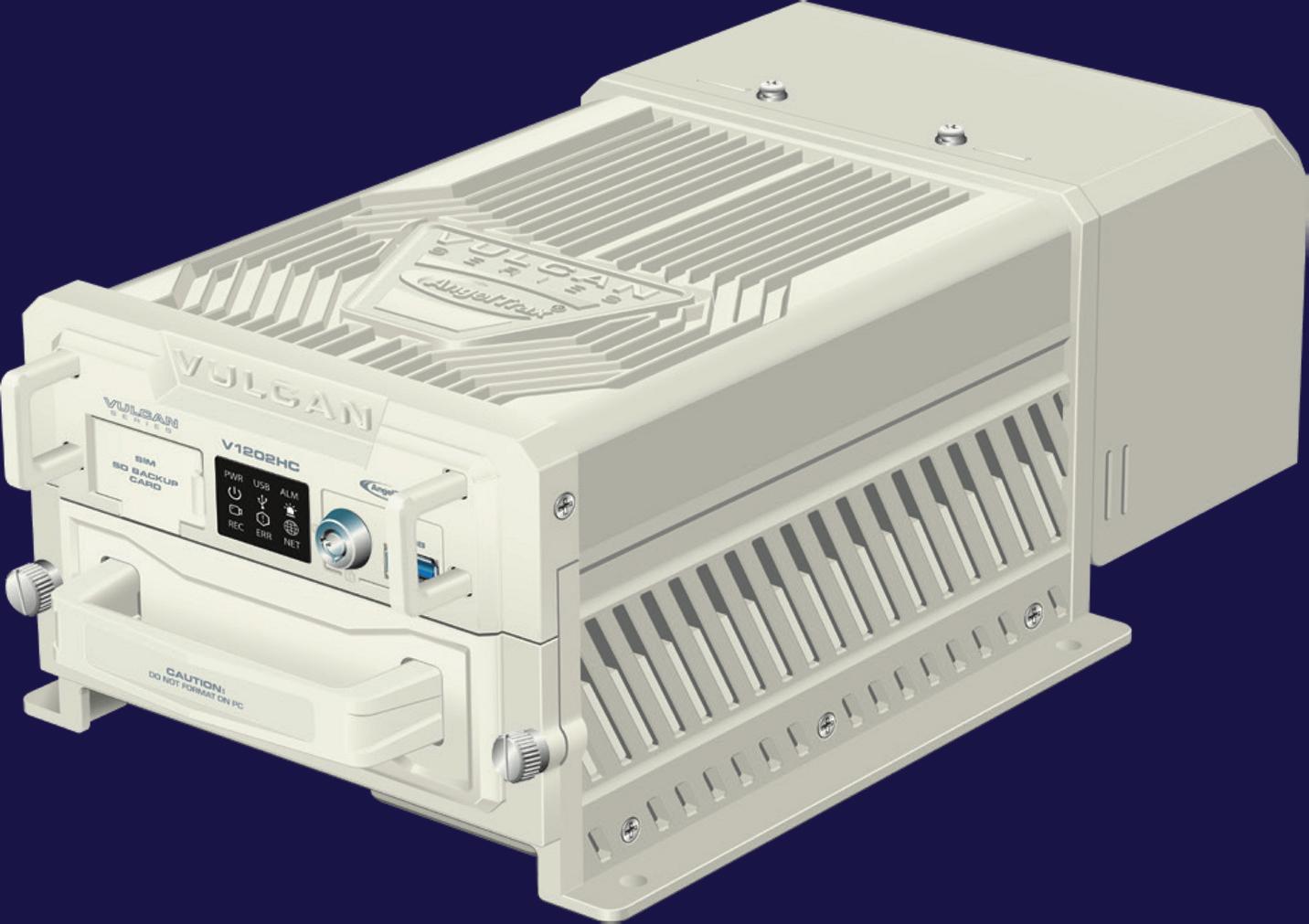








North
American bus fleets adapt to increased ridership, supply chain hurdles and a continued shift to zero-emission vehicles.
BY MEGAN PERRERO, EDITOR IN CHIEF
us networks throughout North America are seeing growth on a variety of fronts. According to the American Public Transportation Association’s (APTA) “Public Transportation Ridership Report” for Q4 in 2024, total bus ridership increased by 9.24 percent compared to total ridership in 2023. This builds on the 16 percent increase in ridership from 2023 compared to 2022, according to a policy brief
Source: APTA 2024 Vehicle Database

Source: NTD 2023 Vehicles Age Distribution
From 2023 to 2024, there was a 37 percent increase in the number of active electric buses.
(Source: APTA 2023 & 2024 Vehicle Database)



As of January 2024, there are over 45,000 active rubber-tired vehicles in the U.S.
(Source: APTA 2024 Vehicle Database








Diesel energy use declined by 3% while electric battery energy use increased by 2% compared year over year.
(Source: 2022 & 2023 NTD Fuel and Energy)
Source: 2023 NTD Fuel and Energy Useage
vehicles by type Rubbertired transit energy use Rubbertired transit vehicle age distribution





11.2% of active vehicles are past their useful life when calculating for all vehicle types.
(Source: NTD 2023 Vehicles Age Distribution)
Percentage of vehicles past their useful life: 12% of articulated buses; 18% of buses; and 4% of cutaways.
(Source: NTD 2023 Vehicles Age Distribution)
APTA released in April 2024. In the same brief, APTA cites that national public transit ridership has reached 79 percent of pre-pandemic levels.
As ridership comes back to transit systems, agencies are investing in their bus fleets. Over a dozen of bus orders have been announced since the start of the
new year, with many orders including low- or zero-emission vehicles. This follows the data from Mass Transit’s “2025 Mobility Outlook Survey,” where 40 percent of respondents said their bus fleets needed the most immediate investment. Several high-profile bus projects have also made strides in the past year, with

IndyGo launching the Purple Line, its second bus rapid transit route; Seattle Department of Transportation breaking ground on its RapidRide J Line; and the Port Authority of New York and New Jersey moving ahead with its Midtown Bus Terminal replacement project after securing federal funding.
Navigating a delicate supply chain



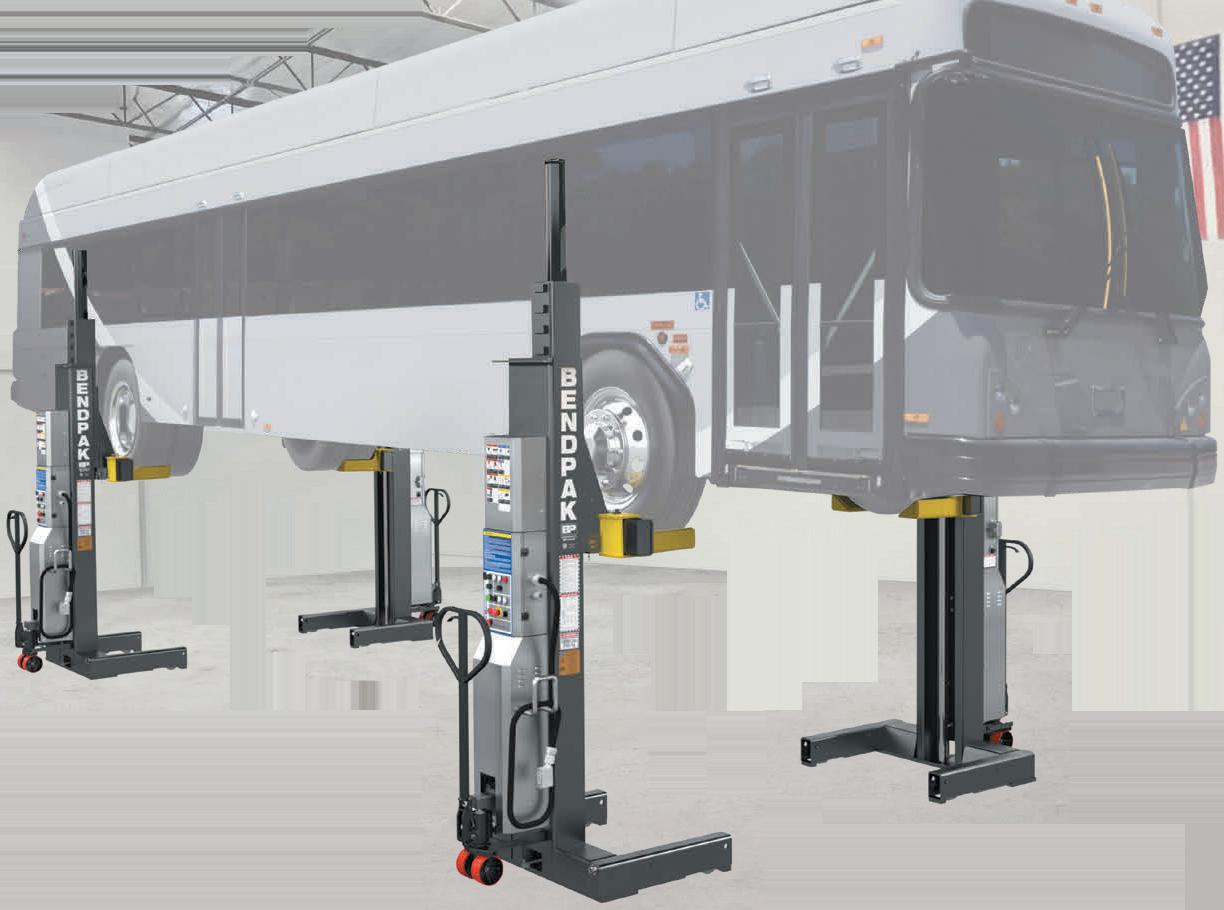
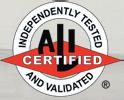

While APTA is reporting 2,094 rubber-tired vehicles are on order as of Jan. 1, 2024, according to its 2024 Vehicle Database, fulfilling these orders may come with some hurdles. U.S. bus manufacturing and the larger North American transit bus supply chain has already been experiencing challenges, with several original equipment manufacturers (OEMS) having already or about to close operations. Nova Bus sold its Plattsburgh, N.Y., plant at the end of 2024 while REV Group sold ENC in October 2024. However, new players are entering the market, with Solaris signing its first contract in the U.S. market for an electric bus order and Micro Bird setting up manufacturing operations in Nova Bus’ New York plant.

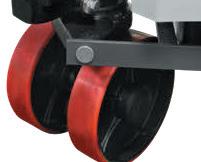
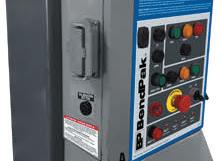
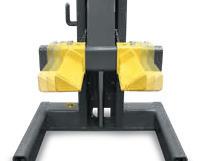

Adding manufacturers is one step to build resiliency into the supply chain. Other steps being taken include the Federal Transit Administration’s (FTA) proposed Buy America Waiver for Battery Electric Minibuses, which ended the comment period early January 2025. This follows FTA’s extension of the Partial Buy America Waiver for Vans and Minivans, which was originally granted in 2022. APTA also continues to leverage the recommendations from the Bus Manufacturing Task Force, which encourages agencies entering contracts to consider adding in price adjustments in contracts, implementing progress payments and including vehicle price adjustment mechanisms to account for inflation or deflation throughout the contract lifecycle.
In line with these recommendations, a couple of agencies took steps last year to help streamline the procurement process. The Los Angeles County Metropolitan Transportation Authority (L.A.
Metro) Board of Directors adopted a policy that requires all future bus procurements to minimize customization speci cations and introduce new and early milestone payments. e policy also encourages other local bus agencies to participate. L.A. Metro’s Regional Zero-Emission Bus Procurement policy is meant to provide relief to OEMs.
The Jacksonville Transportation Authority (JTA) Board of Directors approved a similar measure, allowing the JTA to award and negotiate a statewide contract to purchase autonomous vehicles (AVs). e statewide procurement is in partnership with the Florida Public Transportation Association, which allows its members to select from shortlisted companies, a er due diligence, that quali ed through their compliance with speci c operational requirements. is e ort helped standardize and streamline AV procurements throughout the state.
One other thing to watch for will be how the onslaught of tari s and counter-tari s will impact current and future bus orders. e private sector was already bracing for cost increases. In






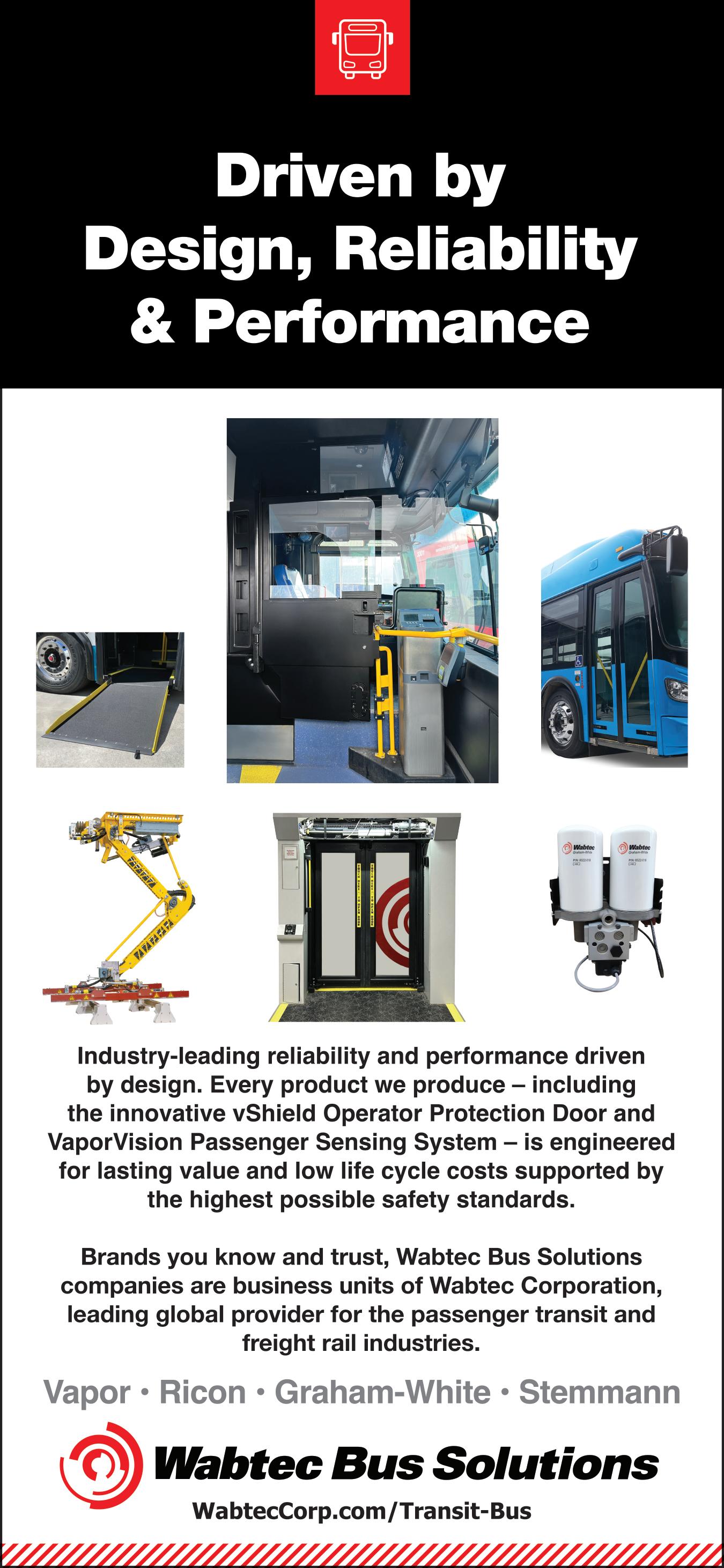
the “2025 Mobility Outlook Survey,” 26 percent of respondents cited in ation as their top concern going into 2025.
Industry continues to pursue the zero-emission transition
According to APTA’s 2024 Vehicle Database, 44 percent of active rubber-tired vehicles in the U.S. are using alternative power. is number will continue to grow. Forty-seven percent of transit agency respondents to the “2025 Mobility Outlook Survey” said they planned to procure battery-electric buses (BEBs). at is compared to the 30 percent of respondents who plan to procure diesel buses.
is increase in alternative fuel and zero-emissions bus (ZEB) adoption is in line with CALSTART’s “2025 Zeroing in on ZEBS” annual report. According to the report, adoption of full-size ZEBs increased 14 percent compared to 2023. While BEBs make up the bulk of these vehicles, adoption of fuel cell









Source: NTD 2023 Capital Expenses 2023
electric buses increased by 55 percent compared to 2023. Small ZEBS also saw an increased adoption rate of 25 percent compared to 2023. CALSTART’s report
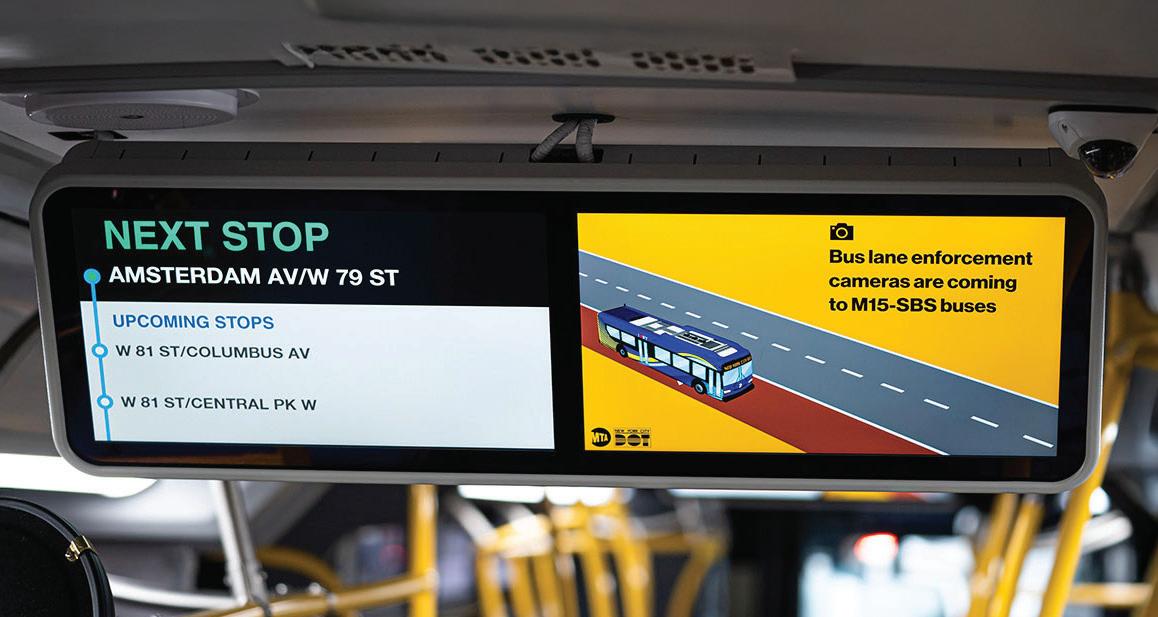
calculates the U.S. will surpass 15,000 full-size ZEBS by 2030 if the industry continues this pace of adoption. Helping fund this adoption is the
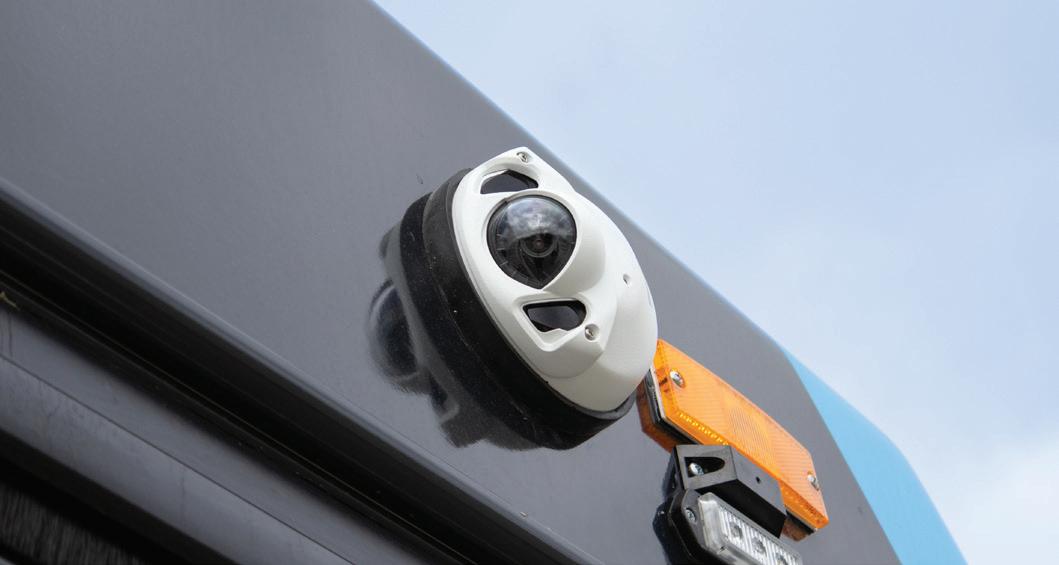
Utilize the game-changing Safety Vision x Vianova partnership to bring real-time infotainment and advanced mobile surveillance to your fleet. Empower your passengers with smarter solutions designed to deliver safety, security, and seamless communication — all in one package.
Want to know more about this partnership? Go to: https://bit.ly/3XwxycK













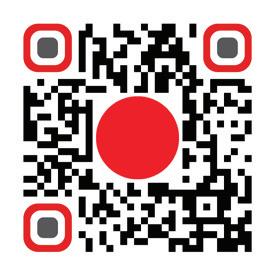
Source: APTA 2024 Vehicle Database
Nearly 26% of new bus orders are for electricbattery buses.
(Source: APTA 2024 Vehicle Database)




Vehicles currently on order as of Jan. 1, 2024



Of the 2,031 new vehicles on order, 47% will run on alternative fuel.
(Source: APTA 2024 Vehicle Database)
FTA’s Low- and No-Emission Grant program and the Bus and Bus Facilities Grant program. In scal year 2024, over 100 projects across the county received
nearly $1.5 billion in funding from these programs. Projects awarded will use the funds to purchase hydrogen fuel-cell buses, BEBs, charging equipment and
modernized facilities to support the new vehicles. According to CALSTART’s report, this funding supported the purchase of nearly 600 ZEBs in 2024.
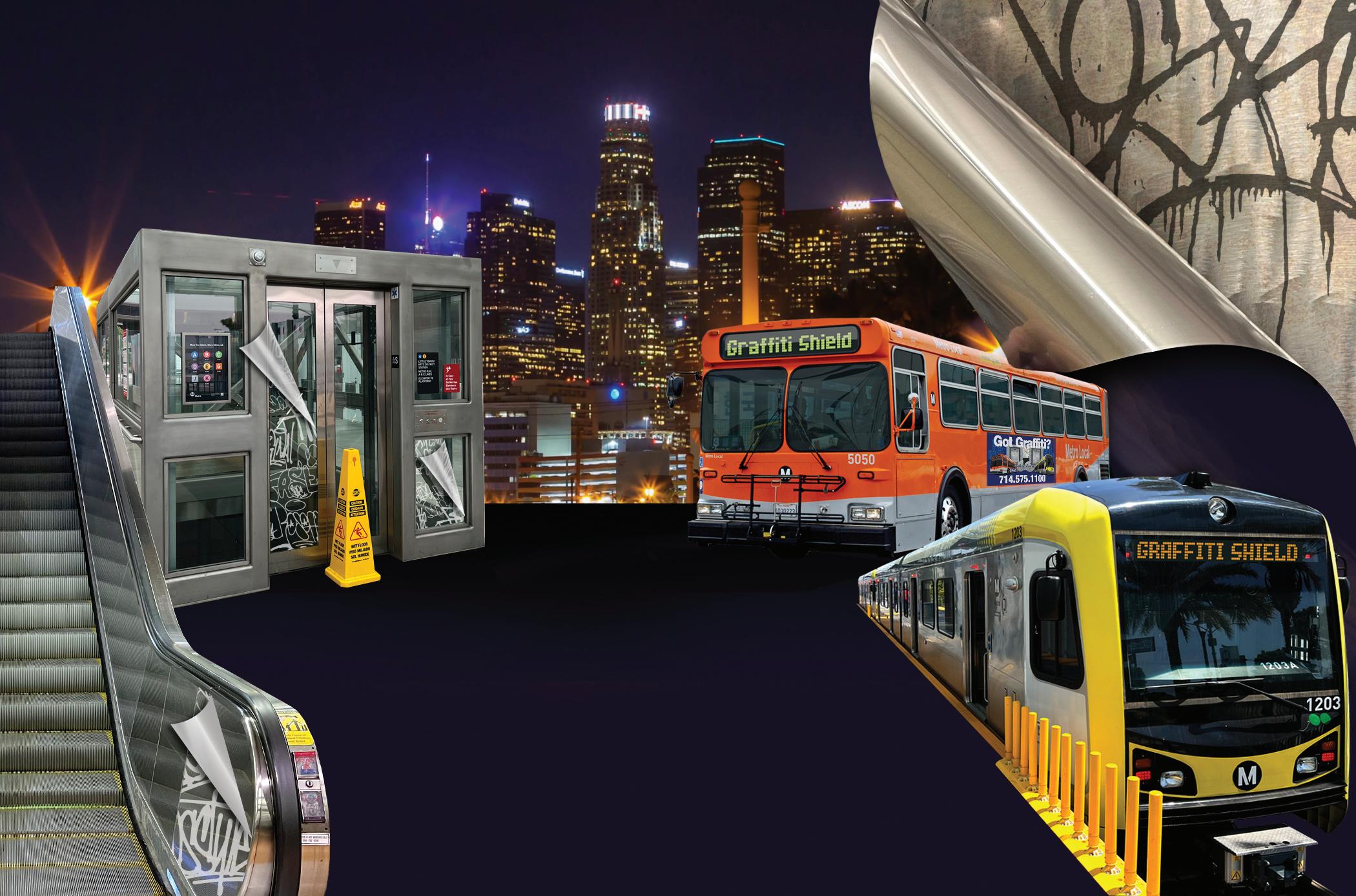
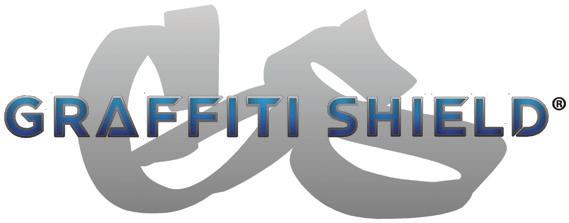
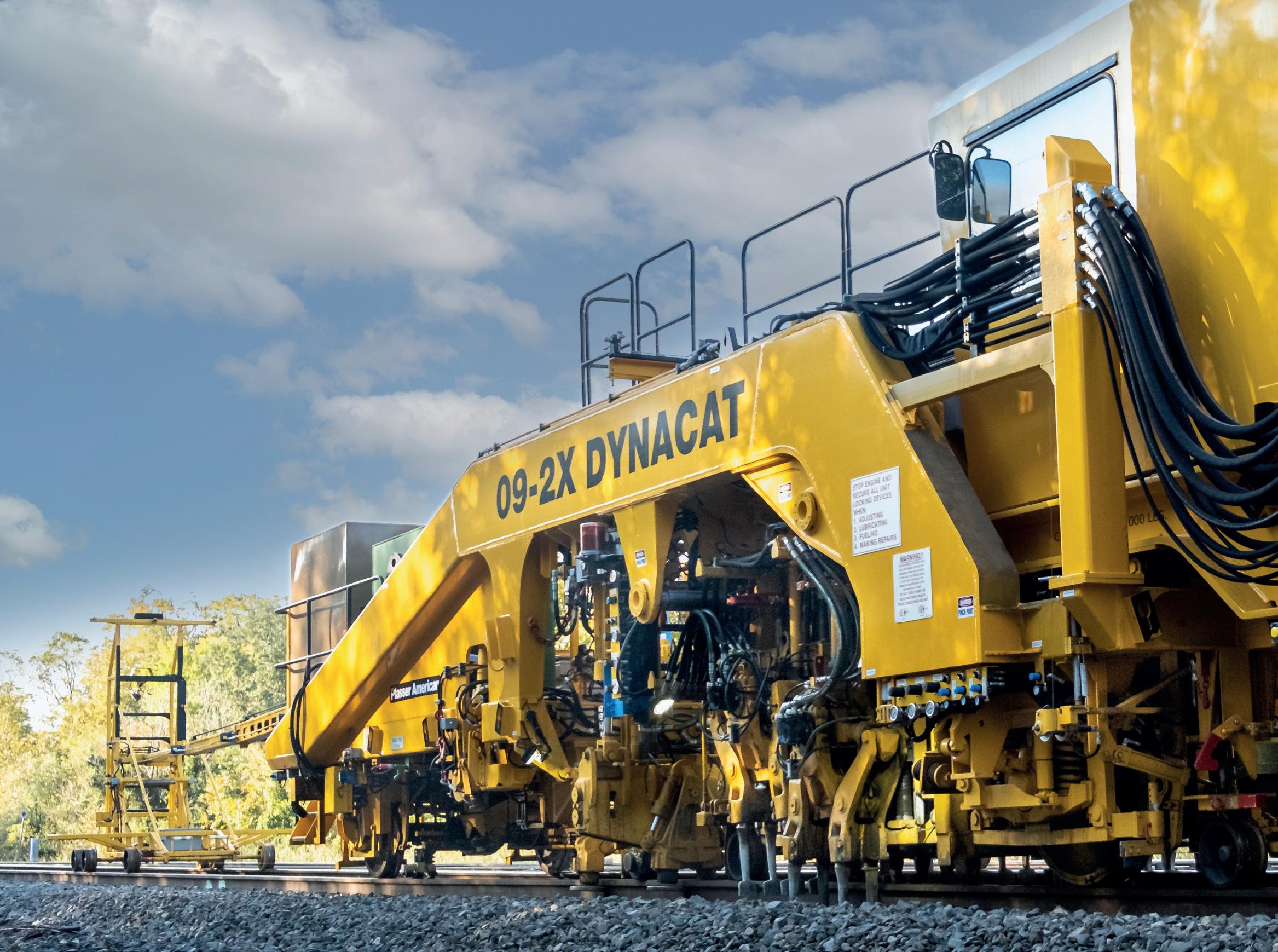
The Plasser heavy-duty, high speed, continuous action switch and production track tamping machine 09-2X DYNACAT is capable of tamping one or two ties at a time with an integrated dynamic track stabilizer. Tamping and lifting units are mounted on a separate satellite frame attached to the main frame. While the satellite indexes two ties during the actual work process (lifting, lining, cross-leveling, and tamping), the machine’s main frame with stabilizer system moves smoothly and continuously. Equipped with AGGS, ATLAS, PLC CAN bus control system, and it‘s unique design and construction allows the 09-2X DYNACAT to achieve production rates of up to 4,200 feet per hour.







Mountain Line is currently fully committed to its 100 percent zero-emissions fleet despite current uncertainties in federal funding.

Mountain Line puts battery-electric buses to the test, evaluating the technology’s performance in a cold-weather climate.
BY EMAN ABU-KHALED, ASSOCIATE EDITOR



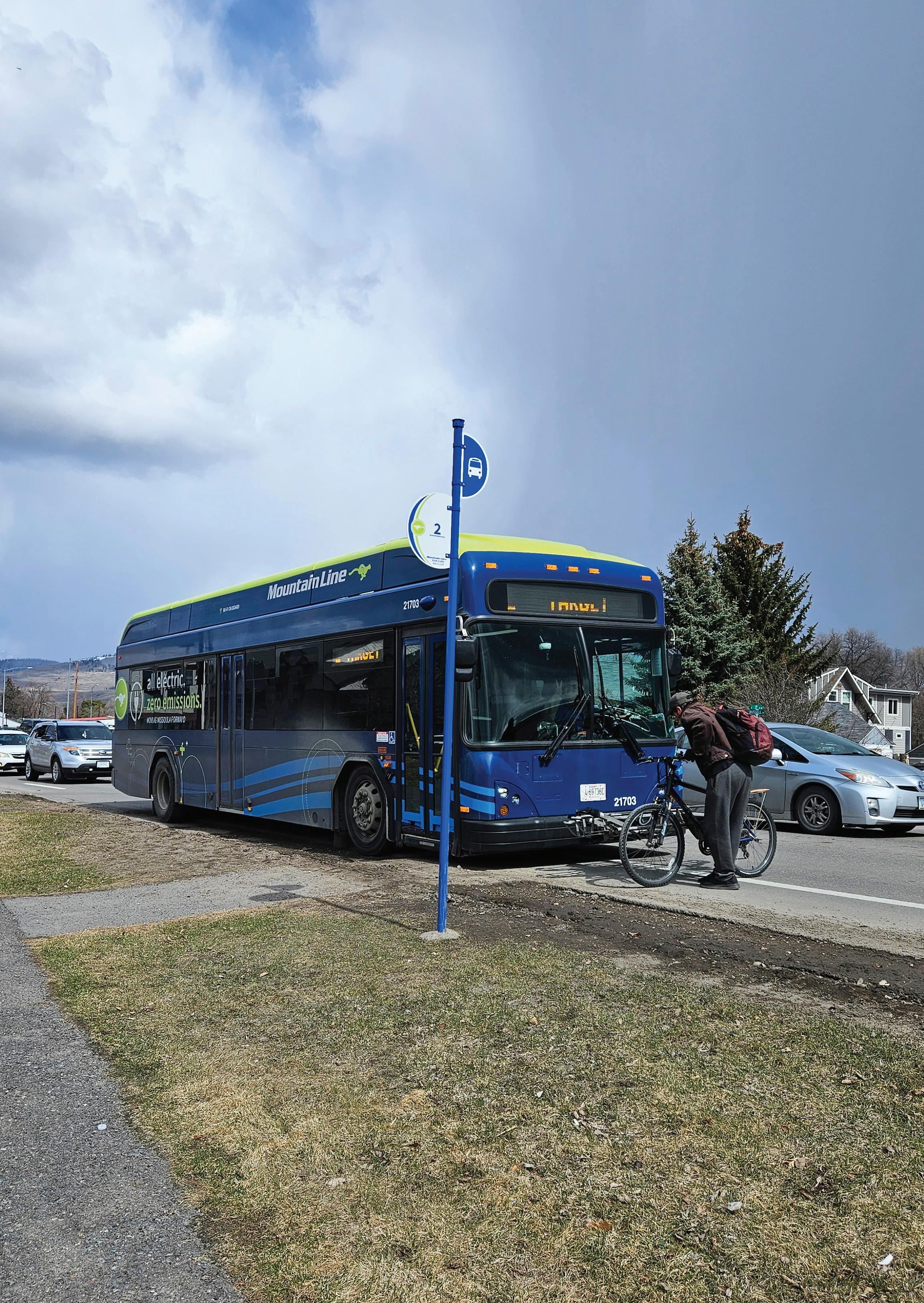
In the heart of Montana, where snowy winters and freezing temperatures are more common than not, Mountain Line is on a mission to make a full transition to a zero-tailpipe-emissions bus eet. e transition from diesel-powered buses to electric is part of the agency’s larger e ort to reduce carbon emissions and improve air quality. However, in a state where temperatures can plummet to -20°F or lower and where snowstorms are frequent, the move to electric buses comes with a set of unique and challenging hurdles.
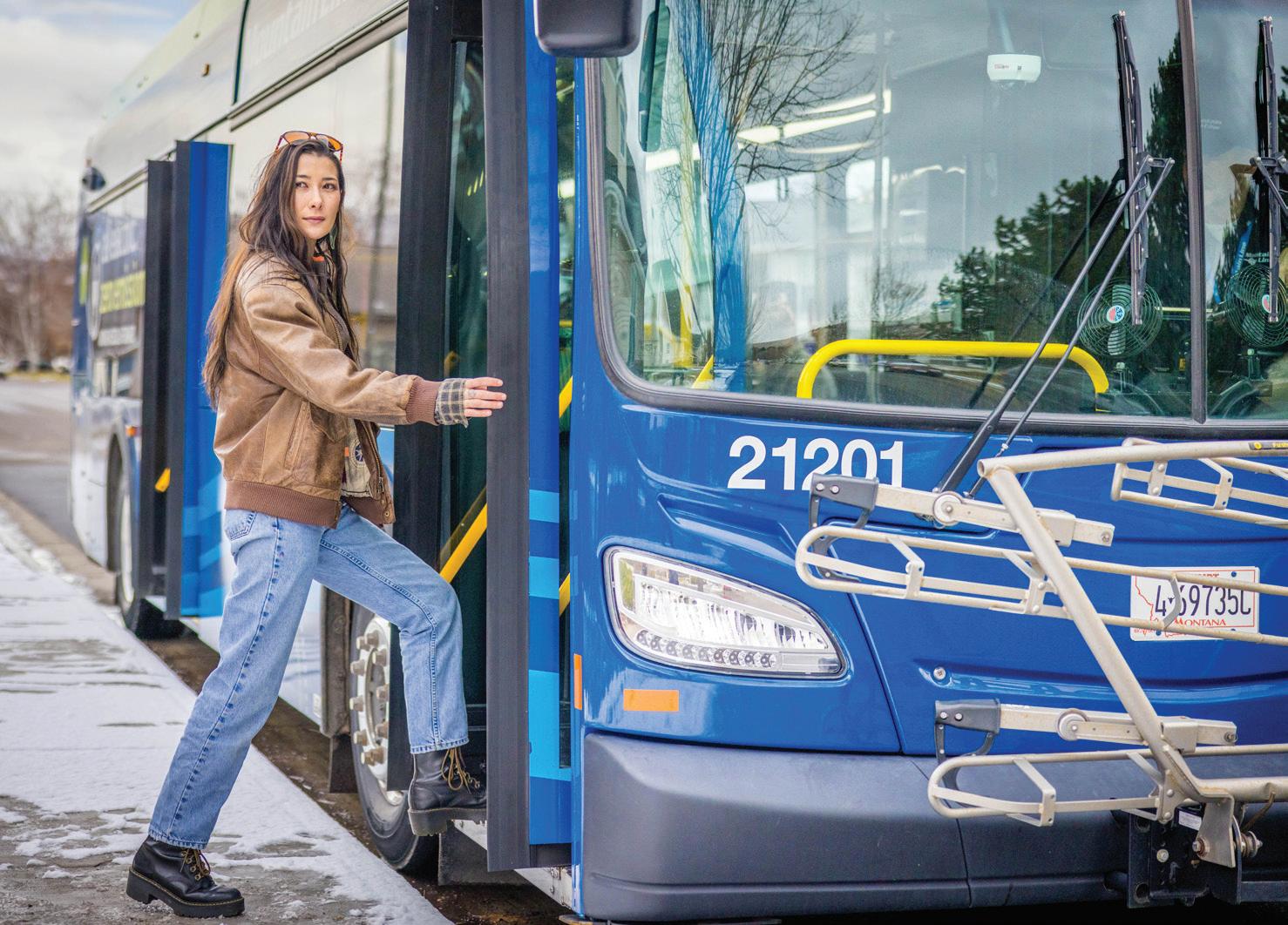
Mountain Line worked with CTE during its cold weather study to help evaluate the different buses’ performance.
When Mountain Line first took interest in battery-electric bus (BEB) technology in 2015, the agency wanted to invest in the idea of operating a fleet of buses that helped to reduce the agency’s carbon footprint. Mountain Line found that electric buses consume less energy per mile than buses using other common propulsion technologies, such as gasoline, diesel and natural gas engines.
In 2017, Mountain Line was awarded a Low- or No-Emission Grant from the U.S. Department of Transportation to purchase six Proterra BEBs, which were the top BEB technology of its time, according to Mountain Line Director of Operations Jennifer Sweten. Mountain Line wanted to test the efficiency of an electric bus while operating in a colder climate.
“We bought into the lie at the very beginning that at the end of the day [a BEB] is just a bus, and at the end of the day, it’s so much more than a bus.”
Jennifer Sweten, director of operations, Mountain Line
Sweten says the agency began to see range issues with its Proterra BEB pilot within the first six months.
“We took delivery of the buses in the summer of 2019, then in 2020, we were seeing range issues that were cutting our range in half at a warmer temperature than we were expecting, which was about 20°, but we were making it work,” Sweten noted.
To address this issue, Mountain Line worked closely with bus manufacturers to develop solutions that would help ensure the
fleet would run efficiently in the cold. This included incorporating heated battery systems to maintain optimal temperature levels and testing buses in similar conditions to Missoula’s winter weather. While cold-weather performance tests were promising, the risk of a shorter range on icy roads or increased power consumption during subzero temperatures remained a concern. The agency had to develop strategies to ensure buses could complete their routes without running out of charge too early.
Mountain Line kept its diesel buses on constant standby to ensure efficiency in operations while testing its BEB technology. Sweten says this was a part of Mountain Line’s efforts to determine where the BEBs would be most reliable and what scheduled service routes would become too taxing on the Proterra BEBs.
The agency saw that despite the Proterra BEBs’ shortcomings in range, a BEB fleet was still something that could be possible with the right kind of technology improvements.
In 2020, the Missoula Urban Transportation District Board of Directors, the governing body of Mountain Line, passed a resolution to achieve a zero-tailpipe-emissions fleet by 2035, setting the agency’s initiative in stone. Mountain Line went full steam ahead with its endeavor, launching a cold weather study and adding two GILLIG and two New Flyer BEBs to its growing fleet. The agency also used $1 million in Volkswagen settlement dollars to purchase two more GILLIG buses.
These buses were put through a yearlong study that evaluated the performance of BEBs in cold weather, particularly their battery efficiency, range and heating capabilities, while also analyzing charging behavior in freezing temperatures. This study allowed the agency to assess the real-world feasibility of operating BEBs in a cold climate while ensuring reliability and efficiency during peak winter conditions.
To monitor the study, Sweten says Mountain Line installed the same monitoring software on all its buses
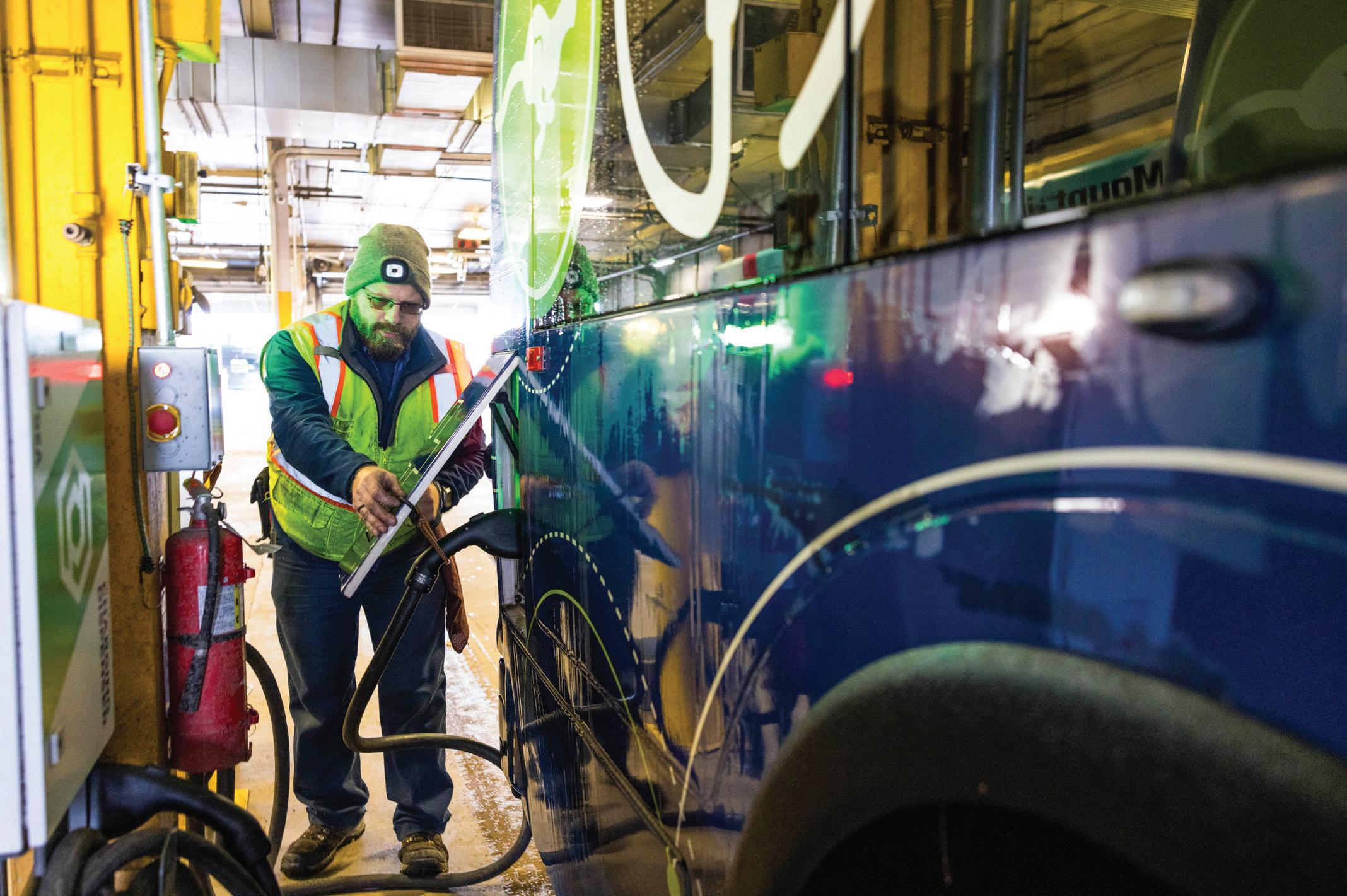
as a part of this study. The Center for Transportation and the Environment helped Mountain Line to understand how cold temperatures would impact the buses’ range, charging times and overall performance, ensuring they could operate reliably year-round in Missoula’s frigid temperatures.
Sweten notes Mountain Line’s transit dispatchers played a major role in monitoring the buses and taking in real-world data while they were being tested out in the field.
Mountain Line also focused on each bus manufacturer’s capabilities. The agency’s cold weather study found that GILLIG’s 686 model achieved full feasibility with 26 runs. The study also showed that New Flyer’s bus performed well, with a generally high count of feasible runs in very cold conditions. Proterra and GILLIG’s 444 model had slightly fewer
feasible runs, with limitations in colder temperature ranges.
Sweten says that the BEBs’ schedules were altered with the current weather situations in mind.
“We had to adapt on the fly,” Sweten noted.
When buses were experiencing slippery roads during icy weather, the agency had to alter schedules because much of the range that could have been achieved by the BEBs was compromised due to the bus automatically shutting down its regenerative breaking system, according to Sweten.
To ensure its team was equipped to keep up with the maintenance of the BEBs, Mountain Line worked to beef up its procedures and protocols.
“We bought into the lie at the very beginning that at the end of the day [a BEB] is just a bus, and at the end of the day, it’s so much more than a bus,” Sweten said.
Mountain Line worked to educate its mechanics on high-voltage safety protocols, battery diagnostics, thermal management and electric drivetrain maintenance. The agency also relied on its collaboration with original equipment manufacturers for hands-on training.
The agency says it also worked to train its drivers on efficient acceleration, regenerative braking and energy conservation
Mountain Line worked to educate its mechanics on high-voltage safety protocols, battery diagnostics, thermal management and electric drivetrain maintenance.

techniques to maximize range. This also helped to improve operators’ understanding of the bus technology’s capability.
Committed to the cause
Mountain Line is currently fully committed to its 100 percent zero-emissions fleet despite current uncertainties in federal funding. Sweten says the agency will become a 90 percent zero-emissions fleet in the coming months thanks to incoming BEBs and infrastructure. The agency also has plans in place
Mountain Line used funds from a Low-No grant and the Volkswagen settlement to help purchase its GILLIG and Proterra electric buses.
to build a new maintenance, operation and administrative base, along with a new home for its vehicles. By May of this year, the agency will have 26 BEBs in its fleet.
With the current political climate in the U.S., and the recent increase in foreign tariffs, agencies that have invested in zero-emission technologies are already feeling the pinch. Mountain Line has plans in place to continue its mission but knows the reality of operating in the current climate.
“While we’re committed to battery electric currently and are very close to 100 percent, we are not saying that we’re dedicated to it for an eternity. We’re open to what the future holds,” Sweten said.
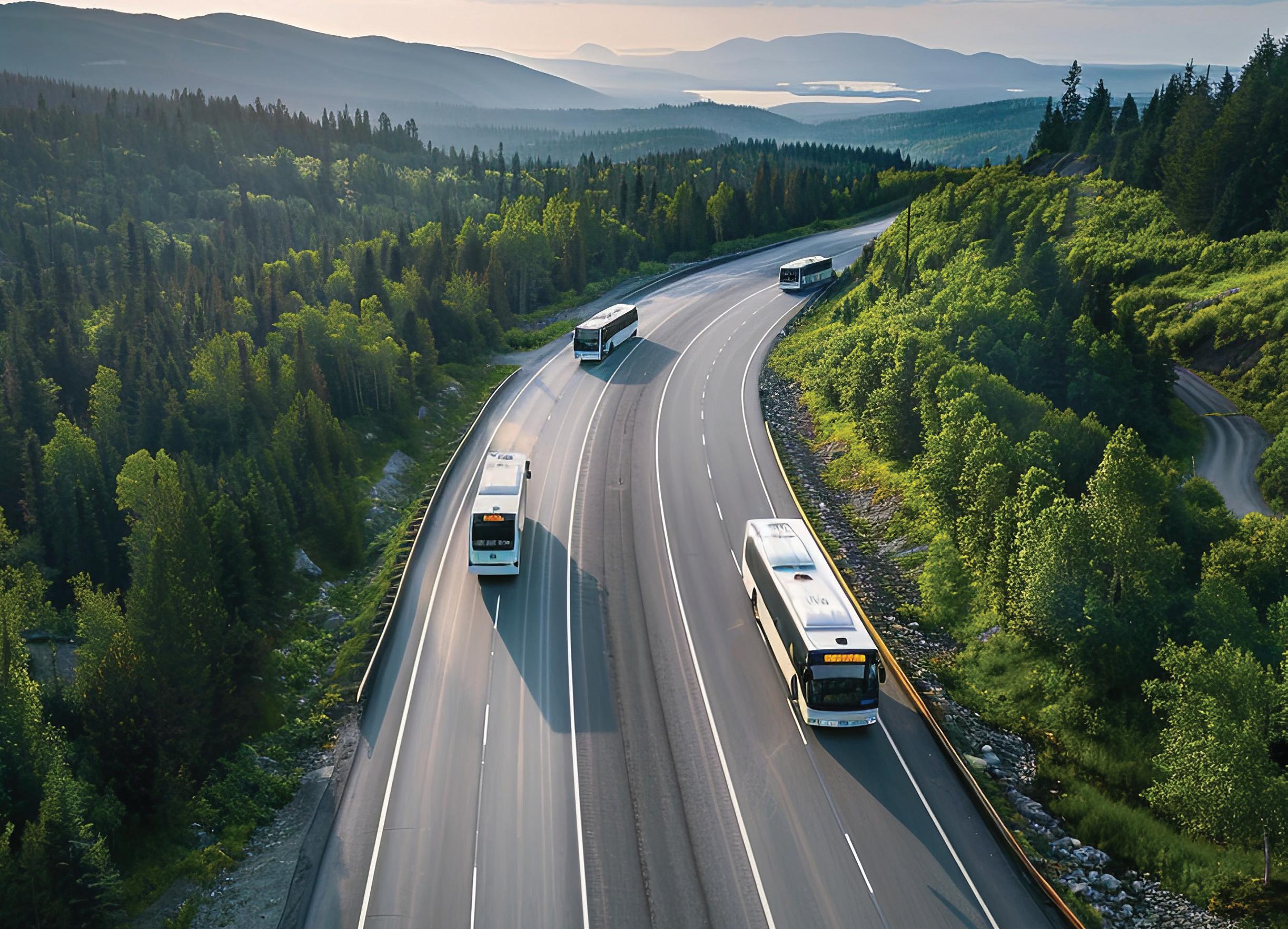




By Michelle Robertson Principal marketing representative, San Francisco Bay Area Rapid Transit (BART)
RECENTLY, I’ve begun to hear the word “storytelling” everywhere.
A designer at Fashion Week says he tells a story with his clothing. A famous actor ignites controversy when he declares himself a storyteller rather than a thespian. A doctor examining me at a recent checkup: “Our bodies are vessels for stories.”
Storytelling is a buzzword, not just in marketing and communications, but everywhere. A search returns hundreds of articles exclaiming the benefits of telling your brand’s story. Another search turns up hundreds of articles decrying the “overuse” and “abuse” of the term.
It may be a buzzword, but it’s an important one. Let’s not put storytelling into a box—let’s expand it. Storytelling is a way of thinking, a means of interpreting and giving meaning to experiences. In the ever-changing transportation industry, it’s an incredible tool.
At Bay Area Rapid Transit, communicating our significance is important all the time, but even more so now as we stare down a financial crisis. Our agency is talking a lot about numbers—budget deficits, fiscal cliffs, ridership data. Numbers are important, but they don’t paint a holistic picture of our agency’s role in the region. Storytelling can fill in the gaps.
You don’t need a huge communications team or a dedicated storyteller to do this work. Stories big and small, highly produced or lo-fi, leave a lasting impact on your audience if you know how to find them and tell them.
Storytelling is a tool with expansive applications. Executives can utilize its principles in remarks at station openings. Engineers can use it to compel the CEO to approve their project. HR can harness it to convince a candidate to take the job.
Because I work in communications, the stories I tell are of a more traditional nature – blog posts, videos and social media. But whether you work in my field or not, knowing how to tell a good story is a valuable skill.
It’s time to tell the story. What now? Before putting pen to paper, ask yourself:
• Who do I want to read/watch this story?
• What strategic messages do I need to convey?
• When is the right time to tell this story?
• How can I tell this story in an impactful way?
To know if your story will be effective, start by asking yourself what makes a good story. A good story takes us on a journey through time. It invites us to step into another’s shoes. It shows us something we’ve never seen. It iluminates the fantastical in what once seemed mundane.
Once you’ve determined what you believe makes for a quality tale, go out and find some stories. The best way to do so? Get out there and strike up some conversations. To end, I’d like to leave you with the five Ws of public transportation storytelling.
WHY TELL STORIES
• Convey transit’s importance
• Appeal to emotion
• Increase brand affinity
• Change/challenge perspectives
• Garner support/advocates
• Celebrate customers/employees
WHAT STORIES TO TELL
• Stories that advance strategic goals
• Stories that address customer concerns/ complaints
• Stories that are emotionally compelling
• Stories that bring your agency to life
WHERE TO TELL STORIES
• Blogs and news releases
• Social media and internal newsletters
• Media spots
• Presentations/speeches and reports
WHAT TO TELL STORIES ABOUT
• Newsworthy events
• Hardworking employees or customers
• Engineering innovations and interesting infrastructure
• History
WHEN TO TELL THEM
• Now
Storytelling is a way of thinking, a means of interpreting and giving meaning to experiences.
“ ”

By Ray Melleady President, Ster Seating
THE GREASE-STAINED
of Philadelphia’s bus depots to Washington, D.C.’s, policy corridors, my four-decade journey through public transit has revealed one persistent truth: America consistently undervalues one of its most powerful economic and social engines.
Public transportation isn’t merely a service— it’s the invisible infrastructure of opportunity, connecting communities not just to destinations, but to possibilities.
Yet, despite overwhelming evidence of transit’s transformative power, our national investment remains woefully inadequate compared to global competitors.
The economic case is undeniable. Every $1 invested in public transportation generates approximately $4 in economic returns. Transit projects create immediate construction jobs while catalyzing long-term development around transportation hubs. Businesses gain access to wider talent pools; workers reach employment opportunities previously beyond reach.
This symbiotic relationship between mobility and prosperity doesn’t require complex economic theory‚ it demands recognition as foundational infrastructure.
This symbiotic relationship between mobility and prosperity doesn’t require complex economic theory—it demands recognition as foundational infrastructure.
Meanwhile, countries across Europe and Asia have accelerated their transit investments to unprecedented levels. China has built over 25,000 miles of high-speed rail in just two decades. Germany recently announced a €90 billion (US$98.5 billion) railway modernization program. Japan’s integrated transit networks remain the global gold standard for efficiency and reliability.
The contrast with American investment is stark and concerning. While transportation represents approximately nine percent of U.S. GDP, public transit receives a disproportionately small fraction of federal infrastructure funding.
Political battles over transit funding persist cycle after cycle, treating this essential infrastructure as
a partisan bargaining chip rather than a national economic necessity.
This investment gap isn’t just about keeping pace internationally—it represents missed opportunities for communities across America. Every unfunded transit project means neighborhoods remain isolated, job seekers can’t reach employment centers and economic development stagnates. The socioeconomic benefits of robust transit systems aren’t theoretical—they’re tangible quality-of-life improvements that ripple through communities for generations.
Having started on the front lines of operations at the Southeastern Pennsylvania Transportation Authority, I’ve witnessed firsthand how transit connects people not just to physical locations, but to life’s possibilities. The single parent who keeps a job because reliable transportation exists. The student accessing educational opportunities beyond their neighborhood. The senior maintaining independence through mobility options. These human stories multiply across every transit system, creating economic value impossible to capture in traditional benefit-cost analyses.
The path forward requires a fundamental shift in how we communicate transit’s value. We must move beyond ridership statistics to articulate transit’s role in creating equitable communities, sustainable cities and competitive economies. This isn’t advocacy—it’s economic reality.
First, we need bipartisan recognition that transit investment transcends political divisions. The ability to move efficiently shouldn’t be a partisan issue when it enables workforce participation and business growth.
Second, we must establish long-term, predictable funding mechanisms that allow transit agencies to plan infrastructure improvements beyond political cycles, similar to models successfully implemented across Europe and Asia.
Finally, we must integrate transit planning with broader economic development strategies, recognizing that mobility infrastructures and opportunity ecosystems are inseparable.
America stands at a crossroads. We can continue treating transit as a secondary consideration, watching as global competitors build the mobility networks of tomorrow, or we can recognize public transportation as essential national infrastructure driving economic competitiveness, community connectivity and social equity.
The choice shouldn’t be difficult. Public transit moves people. Public transit moves economies. It’s time our national investment reflected this undeniable reality.

American Seating offers an integrated A and C port USB power outlet as a part of each sitting of an INSIGHT®, INSIGHTPRIME® or INSIGHT-PRIME+® seating layout. Applicable to various seat model types, including transverse front and rear mounts (as shown). Longitudinal, flipup, rear cross and barrier applications are also available dependent on the bus layout. This low voltage DC power is capable of charging most mobile devices, including phones or tablets. This fail-safe, advanced USB technology will shut down in the event of an electrical short circuit and restart automatically once the short is cleared.
AMERICAN SEATING COMPANY www.americanseating.com
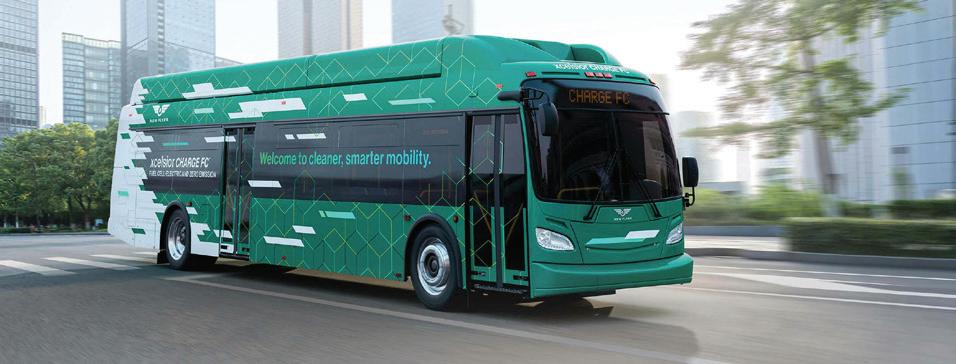
New Flyer’s Xcelsior CHARGE FC is the next generation model of its zero-emissions hydrogen fuel cell-electric bus, delivering longer range and better energy recovery while being smart city capable. The Xcelsior CHARGE FC incorporates four distinct technology advancements: a lighter, simpler and more efficient heavy-duty fuel cell power module that is easier to service; recyclable, high-power batteries; a waterproof battery enclosure providing improved serviceability; and a high-grade, electric drive traction system with up to 90 percent energy recovery.
NEW FLYER OF AMERICA INC. www.newflyer.com
Presenting Sponsor





• With TWO full days of technical sessions and ONE day dedicated to the Principles of Wheel Rail Interaction tailored to Rail Transit applications, issues & technology
• With a Rail Transit-only focused ExpoZone and introducing for the FIRST TIME, InfoZone sessions with Rail Transit specific partners
• Hear from experts in vehicle/track dynamics, noise & vibration, design & maintenance, friction management, and State of Good Repair.
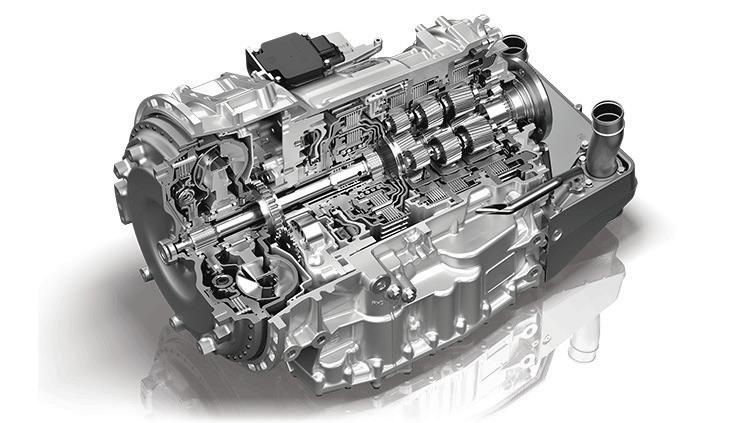
ZF North America, Inc.’s, six-speed automatic transmission, ZF EcoLife 2, is designed for city and intercity routes. Agencies can expect to see three percent in fuel savings, reduced CO2 emissions and passenger comfort through a smoother, quieter operation. The transmission helps to extend service intervals, encourages durability and minimizes maintenance costs while maximizing fleet uptime. The ZF EcoLife 2 transmission works to ensure efficient, smooth rides while its ADAS technology enhances safety. ZF www.zf.com
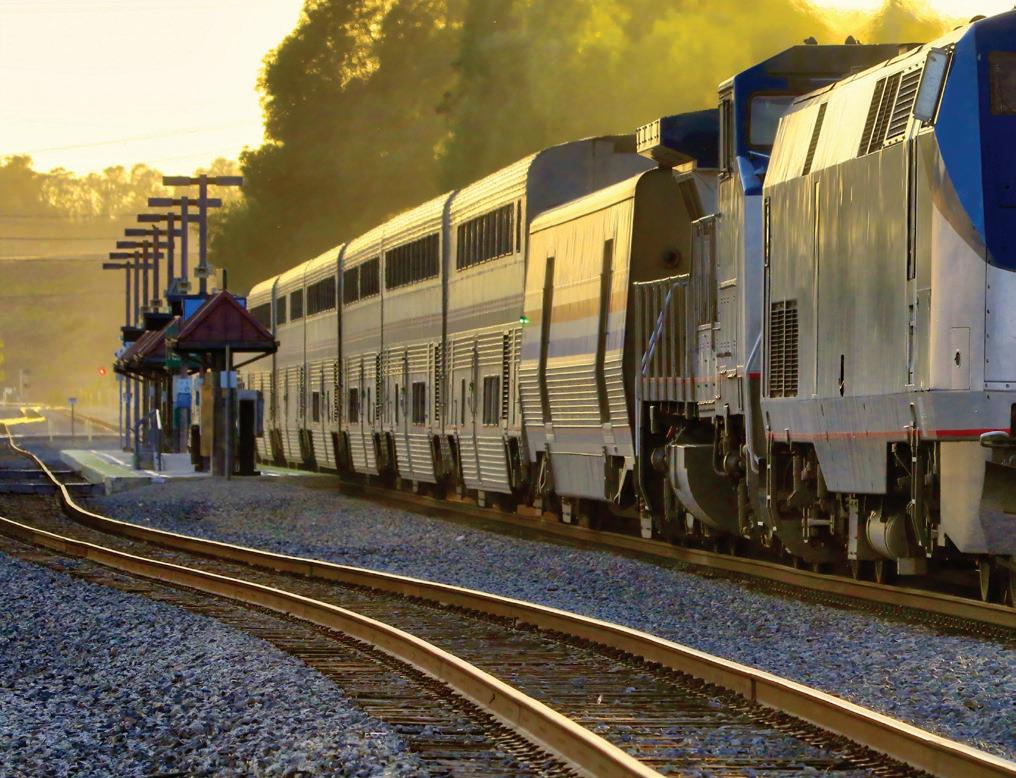
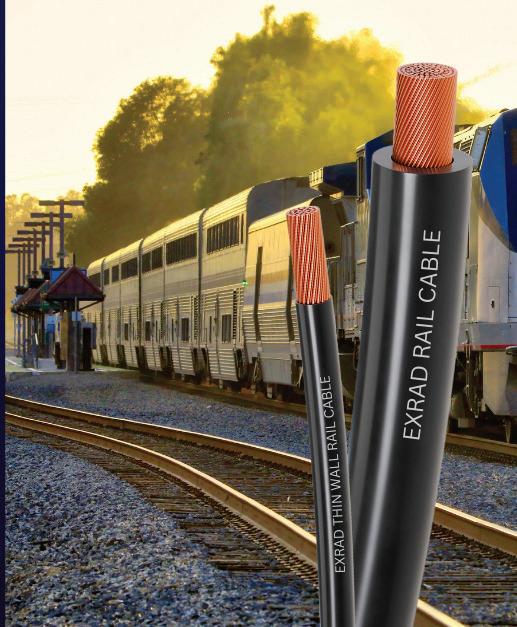

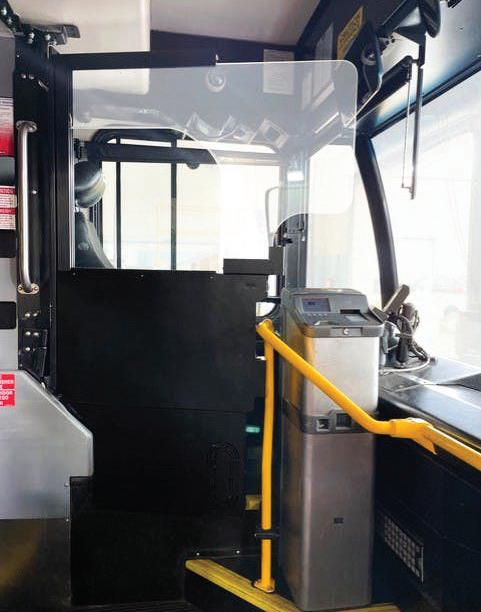
Wabtec’s vShield bus operator protection door now features extended glazing options and a heavy-duty lower door as critical defensive barriers against physical assaults and unwanted passenger interactions. vShield doors can be custom designed for new or retrofit applications with wiring installation and ADA compliance. Features include power window and two variable-speed cockpit ventilation fans, anti-glare laminated safety glass with contoured design for unobstructed views to mirrors and quick glazing replacement. Optional MERV 15 filter improves air quality.
WABTEC BUS SOLUTIONS www.wabteccorp.com/transit-bus
